Meredith Sue Willis's
Books for Readers # 201
February 8, 2019
Read this newsletter online in its permanent location.
Back Issues MSW Home About Meredith Sue Willis Contact
.jpg)
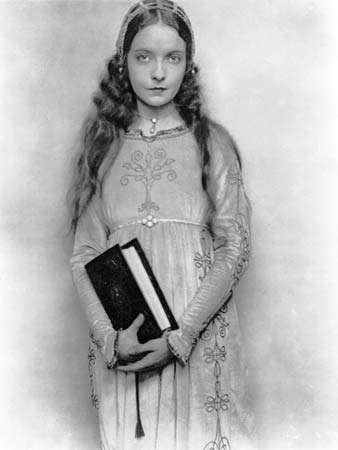
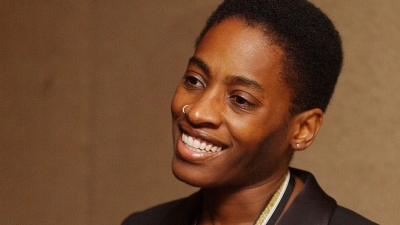
Marc Kaminsky Lillian Gish as movie Romola Jacqueline Woodson
In Memoriam
My longtime writers' group colleague Carol Emshwiller died on February 2, 2019 at the age of 97. She was a magnificent avant garde and science fiction writer, and I can at any moment summon up her inimitable voice reading from her work. Our group used to say, "But, Carol, is that science fiction, or is it avant garde?" And she could never understand why we couldn't distinguish one form the other.
But both of her chosen forms were wonderful and unlike anything else I've ever read. Ursula Le Guin said that she had “one of the strongest, most complex, most consistently feminist voices in fiction.”
Here's a lovely obituary from the Science Fiction and Fantasy Writers of America site.
In This Issue
The Boy in the Striped Pajamas by John Boyne
The Accidental Mountaineer by Barbara Elliot
The Haunting of Hill House by Shirley Jackson
A Cleft in the Rock: Poems by Marc Kaminsky
Ash by Malinda Lo
Barbara Kingsolver’s Unsheltered Reviewed by Eddy Pendarvis
Indemnity Only by Sara Paretksy
A Knife's Edge by Eliot Parker
The Human Stain by Philip Roth
Good Blood, Bad Blood by Smith and Wehmeyer
To Live Here You Have to Fight by Jessica Wilkerson Reviewed by George Brosi
Harbor Me and Another Brooklyn by Jacqueline Woodson
Reviews and notes by Meredith Sue Willis unless otherwise noted.
I've had a relatively quiet few weeks after my fall book promotion tour and the holidays and before the start of teaching this month. I've been reading a lot: books I've been requested to blurb, poetry, George Eliot, a couple of mysteries, some roughly contemporary YA fiction. I do read a lot of things now that I would have turned up my nose at thirty years ago (dumb me).
Has your reading changed over time? Assuming the answer is yes (although I'd love to hear from people whose reading has not changed), the question obviously is how? As I've said before here and elsewhere, I now read much more fiction that centers on narrative, and that the search for story is a return to my original pleasure in reading. I ran across an online piece by Jeanna Kadlec about how working on a Ph.D. made her unable to read literary fiction. She says that she began to have a physical reaction to the kind of reading she once loved, because of her scholarly work. Some years ago, I had to lay aside The Education of Henry Adams because reading it made me mildly nauseated. I'm still not sure why. I've stopped reading and finished reading a lot of books, but only poor Adams made my stomach queasy. I did read his Democracy, a novel, which wasn't especially good, but I read the whole thing with no stomach upset. I'll have to try the famous memoir again some day. Maybe.
What about you? Have you developed an inability to read certain kinds of writing? Have your tastes changed? I keep running into people who say apologetically that they don't read fiction anymore. They loved it when they were teenagers and in their twenties, they say, but they stopped reading it as they matured. I'd love to publish some discussion of these issues in a future newsletter. Please send your thoughts to meredithsuewillis@gmail.com.
This newsletter is mostly reviews of what I've been reading since the holidays, but it also has an interesting review of Barbara Kingsolver's latest novel by Eddy Pendarvis. Pendarvis coincidentally mentions an institution in southern New Jersey that appears in a nonfiction book that I borrowed from a psychologist friend and reviewed here. Also, don't miss George Brosi's assessment of To Live Here You Have to Fight by Jessica Wilkerson about activist Appalachian women.
Please let me know what's on your mind--and your night stand.
A Cleft in the Rock by Marc Kaminsky
This amazing book of poems begins with the long, convoluted, richly accretive lines of "Days of Kivi." 12 pages long, begun in 1969 but revised many times through 2016, it is about the poet and his
brother, and their complex, tortured family whose grandparents were immigrants and whose family atmosphere is a combination of middle European Jewish and Western high culture. The mother resents how housework has stifled her talents; the father wrestles with God. The older, favored first son-- the narrator-- is cosseted and admired for his brains and artistic talents. The second son, Kivi, over the course of the poem, deteriorates with breakdowns and eccentricity and ends as a flamboyant figure in a cape who sings opera at nursing homes.
It is not an easy poem to quote because of the length of its lines and complexity of its thoughts, but it has a fierce freshness that makes reading it a great artistic pleasure even as the events described are excruciatingly painful.
The later poems have entirely different tones, ending with a section called "After a Brief Visit to Herring Point," with poems that are spare, wise, and built of graceful short lines. Kaminsky in this final section has an epiphany that is explored from many angles as the narrator's mind awakens, always grounded in concrete place description and human friendship. The penultimate poem, "The Return," is a reprise of the material in the section. It is a narrative, like "Days Of Kivi," but a lifetime away from the first poems:
Without a word, we unlatched the gate
and set out, making our way
through a maze of dunes toward
the ocean, the undertone
that rattled each of us separately
stopped. In its abrupt cessation,
we could sense what we had come through–
the dread of openness we live withwas gone. There was only this
tide, this night, this
bright moon, these sandpipers
writing nervous indecipherable runes
along this shore where we stood
side-by-side, listening.I greatly admire the shape of the book, its changes and journey, but every poem stands alone. The title poem, "Cleft in the Rock," is about Kaminsky's his father, a titanic, destructive poet in communication with God. Then there is "The Burning Hoop" about the lifelong presence of lust in the narrator and all of us:
My brain stem never left the savannah.
What grace and misery it places
before my eyes, and the presentfilms over like a memory
of the present. Women go by me,
women on bare legsthe bareness of them grabs
my attention and hurls it across
the street toward another bodya bare neck bare skin exposed
to the predator I find, against
everything I hold sacred,is myself....
And then, finally, there are the poems about his marriage told through the lens of his wife's breast cancer. One called "Benghazi" includes many of the materials and themes:
Before this crisis, who'd ever heard
of Benghazi? And before Wednesday
four weeks ago, who'd have guessed
that your weakness climbing up stairs
was not the result of ten-hour days
with students at a Bed-Stuy high school
but breast cancer?'The material is unsparing and detailed: "Metastasis" says "In the privacy of our home,/ the incision site goes on leaking/ longer than expected, whitish/ bits mixed in with the blood....our world/ contracts....." This is brutal but also deeply, profoundly, loving. The cancer poems are about ordinary life as we live it, told without the theatrical affect the writer was bred to in his early years-- but no less dramatic in its quotidian truth.
I cannot recommend the experience of this book too highly. These poems, and his eight previous books of poetry, are all of a piece with a long career as a psychotherapist and in working with and writing about life review, reminiscence, and memoir. It is also, for all its learning and imagery, a highly readable book. Kaminsky goes to extraordinary lengths to speak to us in a common language, restating, elaborating.
He insists on being understood.
Barbara Kingsolver’s Unsheltered, reviewed by Eddy Pendarvis
I was surprised to find that Barbara Kingsolver’s latest novel, Unsheltered, is set in Vineland, New Jersey. I think of Vineland as the home of Vineland Training School, one of this country’s oldest residential schools for children and adults with disabilities. The Vineland school is where Pearl Buck placed her daughter, Caroline, who was born with PKU in 1920 when the condition wasn’t yet understood or treated and when it arrested children’s mental development, often condemning them to a lifetime of dependence on others. Although Vineland Training School has an excellent record, there is a shadow side to its history, a side that links, at least tangentially, to Unsheltered. One of the school’s most prominent researchers, Henry Goddard, wrote The Kallikak Family: A Study in the Heredity of Feeble-Mindedness, a report that claimed to show that mental retardation is inherited. His book included poor science and doctored photos that made the Kallikaks look like stereotypes of “feeble-mindedness.” Through this study and other unscientific science, Goddard helped lead the eugenics movement, a movement that many proponents justified as “social Darwinism” in spite of its having no support from Charles Darwin’s theory of evolution. Kingsolver’s readers don’t meet Goddard in Unsheltered; but they read about Mary Treat, who corresponds with Charles Darwin, and about 19th century opposition to Darwin’s evolutionary theory—his real theory, not the one distorted by elitists to justify unfair social and economic policies.
Given today’s intense divisions over immigration, an issue Kingsolver’s story touches on, it is ironic that Vineland’s Henry Goddard administered a version of the army intelligence test to a group of poor immigrants (who could afford only steerage passage for the trip) arriving at Ellis Island in 1913. Based on his results, Goddard concluded that over 80% of the immigrants were retarded! Research since then has made clear what common sense should have told Goddard—the immigrants weren’t retarded; they were simply clueless as to how to answer questions about the culture of a land they had just set foot on. The misconceptions that accompanied a spurious science, claiming to demonstrate the innate inferiority of some groups of people, confirmed social prejudices and helped create policies that continue to divide our national “house.”
In Kingsolver’s novel, two families live in the same house in Vineland, but the families live more than a century apart—one in 2016 and the other in 1871. The story opens with free-lance journalist, Willa Knox, and her family and their recent move into the house. The second chapter begins the story of Thatcher Greenwood, a Civil War veteran and science teacher, who, with his wife, and her mother and sister, has also just moved into the house. Next door to Thatcher and his family lives naturalist Mary Treat (Kingsolver’s rendition of a real woman who lived in Vineland). Alternating chapters tell the story of these two sets of characters who, to their dismay, have moved into a house so structurally flawed that it’s irreparable.
Willa and her family have to cope with an even more dire problem: how to care for a baby orphaned by its mother’s suicide and left with a father (Willa’s son, Zeke) who has no job security and no idea of how to raise an infant. Thatcher Greenwood’s problems are less dire but bad enough: his wife is unhappy with him; the head of the school where he teaches is unhappy with him; and he feels isolated and constrained, in part because he is forbidden to teach important scientific methods and theories, including Darwin’s theory of evolution. Thatcher’s growing friendship with Mary Treat is one of the few pleasures of his life.
In Kingsolver’s two families, philosophical, political, and personal differences threaten to divide the members and set them against each other. These differences combined with the instability of the house, the families’ financial problems, and the lack of job security shake their confidence in themselves and their future.
Among the issues Kingsolver explores in Unsheltered is surely the question of whether our collective house—global as well as national--- which seems to be in such jeopardy, can be repaired, and if so, by what means? Many threads in the story suggest means of repair, but, to me, the two most fearless characters in the story illustrate the most striking possibilities for averting disaster. Willa’s daughter “Tig” (short for “Antigone,” Sophocles’ defiant fictional heroine) lives in a high-spirited, egalitarian, pragmatic style, making the most of what’s at hand. Mary Treat, the only other leading character who seems happy and self-assured, finds meaning in satisfying her curiosity about the natural world and trying to understand the complexity of even such apparently inconsequential inhabitants as carnivorous plants.
To many readers, maybe especially those who don’t share Kingsolver’s views, this novel is bound to seem “preachy” because of its characters’ arguments over political, economic, and environmental issues. To me, the arguments don’t seem overly didactic. Lots of families today are engaged in such discussions--some less polite than those in Unsheltered. I found most of the dialogue believable and interesting, even though I didn’t feel much empathy for any of the main characters except Tig. I wanted to care more about Mary, but she didn’t come to life for me. When she was the main feature in a scene I felt a little like I was looking at a tableau. However, in the reviews I’ve seen, readers’ responses to the characters vary widely. The “preachy” or didactic quality of the novel has more of a bearing on how the novel contributes to American literature.
Readers expect fiction to entertain them; but whatever our purpose in turning the pages and whatever the author’s purpose in writing, fiction can’t help but instruct. Because of how humans learn, all stories are parables, in a broad sense. Some fiction relies on action, and some fiction plunks down on the side of talk, offering explicit narrative or dialogue about how we should live. Unsheltered is in the latter category, bringing to our attention some of the most crucial issues our society faces and refuses to face, issues that remind me of Mercutio’s death speech in Shakespeare’s play about a divided community. Mortally wounded in a sword fight, Mercutio answers Romeo’s question about the wound, saying “Tis not so deep as a well, nor so wide as a church door, but tis enough; ‘twill serve. Look for me tomorrow and you shall find me a grave man.” Unsheltered is concerned with whether the wounds to our country and our planet are mortal wounds.
As a postscript, I’m recommending two books that make excellent companions to Unsheltered—Cormac McCarthy’s The Road and Meredith Sue Willis’s Their Houses. All three of the books in this Appalachian “trilogy” are by authors with strong connections to Appalachia, and they raise, in very different form, striking questions about how to survive catastrophe and maintain community.
Good Blood, Bad Blood: Science, Nature, and the Myth of the Kallikaks by J. David Smith and Michael L. Wehmeyer
This is a beautiful book: an apple tree on the front cover, half with red apples and green leaves and half blasted black. It has many wonderful black and white illustrations of life at the School for the Feeble Minded.
What caught me, though, was mention of the Kallikaks, the family of putative bad genes famous in the first half of the twentieth century. My father, a high school biology teacher used to tell me stories of the Jukes and the Kallikaks, families who were all retarded and/or criminal--clear examples of heredity in action.
My father wasn't a eugenicist, but he had been educated in the years when the Kallikaks were presented as scientific evidence of hereditary degeneration. This book debunks the science and even the integrity of the social scientists who wanted so much to prove that people passed down traits, especially intelligence and morality, in the same clearly observable way as Mendel's peas.
In the foreground of the book is the sad story of Emma Wolverton, called Deborah Kallikak, who spent sixty plus years incarcerated not for anything she did, but because she was the illegitimate child of someone deemed "feeble-minded." And her feeble-minded mother was labelled feeble-minded because she had illegitimate children.
Emma wasn't tortured or starved–she was even petted a little and given responsibilities and pleasures within her institution (see the photo above). She was, on the other hand, never given freedom, never made decisions for herself. She was good at music, crafts, writing friendly letters. She did various jobs like waitressing and child care. Was she a mental giant? Who could possibly know? Might she have had bad things happen to her in life had she been free? Why not? Bad things happen to many of us.
So the book first tells her story, and then gives a summary of the history of eugenics in the United States. There was an active movement in the U.S. to connect genes to intelligence to race--and some American publications were praised highly by Hitler himself. I don't suppose we should really be surprised during the years of lynching of black people and fear of southern European immigrants that we also had a movement to cull out and isolate or sterilize or euthanize those who didn't make the grade.
Other things of note: there was a failure to grasp that genetically controlled qualities are not one-to-one: that is, skin color, hair texture, and certainly something as complex as intelligence, are combinations of many genes plus the complexities of environment.
Henry Goddard, author of The Kallikak Family (1912) and the central figure at the Vineland (NJ) Training School where Emma Wolverton was kept (originally "The New Jersey Home for the Education and Care of Feebleminded Children"), made up something vaguely scientific to support his pre-existing beliefs. Goddard's book on the Kallikaks posited two genetic lines from a single revolutionary war soldier, one set of descendents normal and successful, one degenerate and feeble minded. Goddard's facts were later discovered to have been misinterpreted-- and made up.
Goddard was also deeply involved in intelligence testing, repeatedly "proving" that the majority of immigrants were feeble-minded! The categories my father learned from his biology textbooks were idiots, imbeciles, and morons-- the morons a category created by Goddard and some others to cover those just below normal.
A handful of culturally and experientially derived questions, and people, like southern European immigrants and Emma Wolverton were labeled–and incarcerated–for life.The book has lots more about the development of intelligence testing, and how prostitutes and women with illegitimate children were considered ipso facto feeble-minded. Goddard believed he and his employees could take one quick look and identify morons and other feebleminded.
We are now a hundred years past the height of the American eugenics movement, and I have to remind myself that a hundred years from now, if there is clean air left for us to breathe, we may be looking back at our present selves in horror.
To Live Here You Have to Fight: How Women Led Appalachian Movements for Social Justice by Jessica Wilkerson Reviewed by George Brosi
This is a book that really needs to be out there, and I commend Jessica Wilkerson for doing the work to make it available to all of us. This book is fundamentally about poor and working-class women activists in Eastern Kentucky during the 1970s. They certainly deserve the attention she gives them. The greatest contribution of the book is how it lifts up the implicit and explicit ways that the women covered here saw themselves primarily as care-givers. It was from this foundation that they worked hard to foment the kinds of social changes that would
make their whole world more caring and make it easier for the care-givers. And Wilkerson cites this basic value as central to the contrast between working-class feminism and middle-class feminism.
The opening chapter provides an excellent overview of women activists of the previous era, establishing the background of female activists upon whose shoulders Eastern Kentucky women activists stood in the 1970s. I like the extended biographical sketches of some of the most significant women Appalachian activists of the 1970s. Wilkerson starts with real brick and mortar institutions that offered a focus and resources for activism – The Marrowbone Folk Center in Pike County, led by Edith Easterling, and the Mud Creek Health Clinic in Floyd County, led by Eula Hall. From there the discussion turns to welfare rights organizing, the Brookside Strike in Harlan County, and the Coal Employment Project.
Another strength of the book is that it follows the ways that activism can be passed down in families. Examples include Bessie Cooper and her daughter Linda Elkinton; Edith Easterling and her daughter, Sue Ella Kobak, and Bessie Lou Cornell and her mother Lois Scott and her grandfather Dave Jones.
I appreciate that Wilkerson continually offers reflections on the importance of the work of women of color who provided the context for activism at this time, and her coverage of Mary Farris, an African-American activist. In the Introduction, Wilkinson cites four ways that even poor and working-class white women in this economically depressed area were beneficiaries of white privilege – 1. Through the wages, land, and housing they received from their male partners and kin. 2. Through the jobs available to white women, but not Black women. 3. Through employer and government pensions and benefits available primarily for whites. 4. Through government programs aimed specifically at helping all-white communities.
I think it would have helped the book to have painted a clearer picture of 1970s activism in general in the mountains in the 1970s, and I don’t think that would have taken away from the point of the book because women, working class people, and people of color played a significant part in all these efforts. Not before or since have there been so many victories fought and won by Appalachian people on the national stage than in this decade. I don’t think any other region has ever gained so much in so short a time. What other industrial employees, besides those with black lung, have gained federal compensation? How frequently do national labor unions elect the kind of grass-roots reform ticket that Arnold Miller of West Virginia represented in his victory in the United Mine Workers election? What other industries are controlled in the way that the Surface Mining Control and Reclamation Act regulated strip mining and created jobs in Appalachia? And similar progress was also made for underground coal mining with the passage of the Mine Health & Safety Act,
This book makes clear that there is much more work to be done. We need to celebrate strong Appalachian women activists from other Appalachian states, for example African Americans like Almetor King and Madeline James. Also, there is much to write about the working-class women activists of Appalachia since the 1970s. There were, in addition, a few working-class female activists of the 1970s in Eastern Kentucky who deserve further treatment, for example, Hazel King of Harlan County, Gaynell Begley of Letcher County, and Loretta Ball of McCreary County.
Overall, I think Jessica Wilkerson did a great job of being accurate and explaining what she was writing about, but there were a few slips – misspelling Robb Burlage’s first name and Linda Elkinton’s last name, mentioning Peggy Terry the first time (p. 62) without saying that she was a working class woman who came out of Uptown Chicago’s JOIN Project aimed at Appalachian migrants like herself; mentioning gatherings at The Hawthorne School, Pipestem, West Virginia, and Clinch Valley College without explaining both the venue and the occasion; not explaining, from the beginning, that the Eastover Coal Company was a subsidiary of Duke Power. And there were some times when readers could have benefitted from having the dates more clear, like the start of Chapter Two. Perhaps the sub-title could have clarified the focus on Eastern Kentucky in the 1970s.
Despite my picky points, I welcome this book whole-heartedly and salute Jessica Wilkerson for doing such a good job.
The Human Stain by Philip Roth
As usual, I admire Roth and keep reading, but The Human Stain has some seriously self-indulgent passages. I am impressed by his fertile flood of language, his agglutinative approach to creation, but also terribly impatient when it goes on too long, or when he indulges himself with the privilege of going into a character (usually
a woman) that he really doesn't or like or understand. There are also wonderfully rendered set pieces, like the beautifully imagined one where the PTSD Vietnam Vets go to the Chinese restaurant to train themselves in being around Asians.
I find him using two tricks over and over: one is that flood of language, often in fascination with a physical process: carpentry, glove making, and in this book boxing, using a mechanical cow milker, and drilling a hole for ice fishing. The other trick is his surprises, which he uses to move his plot. He suddenly foretells something very important (plot spoiler imminent!) like the race of main character Coleman Brutus "Silky" Silk who appears first to be an old Jewish retired classics professor, but turns out to have come over to the white side in his youth. Or he makes a flat statement that someone will be dead in three months. Those reveals work nicely and spare him having to lay in all the details and chronological narrative that might get boring to the reader or the writer.
The storytelling trick works brilliantly, but the word flood doesn't always.There is a long passage from the point of view of a pretty and ambitious French national who is one of the two villainous or at least sometimes villainous characters. He creates her by imagining her making a personal ad for a lover, and to save her reputation she takes some pretty unbelievable actions, told cursorily.
He really isn't very good with women from the inside. Coleman Silk's younger sister Ernestine appears and works but she's seen from the outside. He comes close with Faunia, Coleman's lover, and has a nice effort at imaging her interior by having her think about crows, but in the end, most of his women are there for the men to fuck or want to fuck.
Then there's our faithful reporter, Nathan Zuckerman, who is okay as long as he is truly narrating from the periphery, but once he becomes an active part of the story–once the really interesting people get killed– I got very impatient. Maybe the bottom line is that while Roth is always worth reading, he just isn't my cup of tea. But why? Because he so blithely grants himself the the privilege of the Great Novelist? Because I don't think he's that much better a writer than a lot of other people? Because I'm jealous? Because I don't have time for masculine self-indulgence anymore?
Romola by George Eliot
I think I finally get this book. Maybe it has to do with having traveled to Florence fourteen years ago; or to having
listened to the Italian Renaissance Great Courses lectures; or just gradually over time picking up a little of the history. Also, there was Sarah Dunant's not great novel The Birth of Venus about these same years (1494 with the death of Lorenzo the Magnificent to the death of Savonarola @ 5years later). The Dunant's book was annoyingly anachronistic with the main character's body paint and the liberal sort-of convent-- and in contrast, Romola seems far more true to the time than I remembered. It does jar me that Romola walks around town unaccompanied so much, but mostly, Eliot's research seems to have helped her create that world.
My first reading of it was grim and difficult. I would never have finished if not for wanting to be able to say I'd read all of George Eliot's novels. Then I read it again around the time I took the trip to Florence. In my journal I wrote that I was....
....having the usual trouble with the long infinitely boring passages of heavily playful wit that do not show George Eliot at her best— on the contrary, without England, one wonders why she bothered with all the dialog. Livens up considerably with the sensitive young woman in thrall to a demanding and denigrating older man (Romola and her father, like Miss Brooke and Mr. Casaubon, and, I believe, Eliot and her dad??) Also the moral dilemma of Tito, and his easy beauty, easily languorously going evil. Also the effect of religion on a susceptible young woman.....It really is getting better and better— Tito is a far more interesting character (because he is mixed) than Romola, so far.
This third time around, I find myself recognizing more names, having the context well in hand. The long conversations at Nello the barber's were actually fun, for a while, and seemed like a nice device for capturing public opinion and giving back story.
Romola is another one of Eliot's idealized versions of herself. In some places, this gives her real and appropriate insight, especially in how a nonbeliever is attracted to passionate belief. No one does that as well as Eliot--how religious belief can attract but not capture a spiritual but skeptical mind. Thus Romola is attracted deeply by the fanatic Savonarola, even though she has been raised a humanist. There are a couple of good confrontations between Romola and Savanarola. Once, he wins her over, at least as far as convincing her to return to Florence and help the sick and poor. The second time, when he won't try to save her godfather, she wins, and Savonarola is shown in his human weakness. Good stuff
And then there is Tito, still the best part of the novel: a delightful, handsome talented young man who wishes no one ill, but never hesitates to step on anyone who gets in the way of his pleasure and advancement. He's one of gentlest sweetest villains in literature.
It is true that Eliot is not as easy here in her researched, painstaking constructed Florence as she is in her incomparable English country settings. Even so, this may be the best historical novel I've ever read. Probably also the heaviest historical novel I've ever read.
SHORT TAKES
Two by Jacqueline Woodson: Harbor Me and Another Brooklyn
Woodson is a highly praised contemporary YA author, and she deserves the praise. Harbor Me is about six kids of mixed and various races in a special
ed class, although it's never clear what the problems are except for the narrator's best friend Holly who is jumpy and probably ADHD. The narrator's situation is that her dad is in prison, and she lives lives with her uncle. Both men are white, and her dead mother is black. She has big hair that is a red color.
The kids have weekly meetings without their teacher and work out a lot of things. The story is structured by one school year and by the situation with Esteban's father getting picked up by la migra.
Another Brooklyn is a more complex book with teen characters, but told with adult distance. It's about four ghetto girlfriends and the narrator's long refusal to admit her mother is dead. Meanwhile, her father and brother join the Nation of Islam. There are lots of opportunities for disaster, and some of the friends have sad ends. Still, we know narrator at least has become an anthropologist.
Woodson is really good, and committed to hopeful if not happy endings.
The Accidental Mountaineer: Essays from the Greenbrier Valley Quarterly, by Barbara Elliott, Illustrations by Sally Cooper
Barbara Eliot is from North Carolina, living in Lewisburg, West Virginia for a quarter of a century. After many years of writing for university television, arts organizations and a bank, she has been writing a column for the Greenbrier Valley Quarterly on whatever topic strikes her. What strikes her, and how it strikes her, is wonderfully upbeat and funny She organizes this collection of short essays by topics, such as what it was like growing up with an undertaker for a father, and about outdoor adventures with her hiking/camping husband. It's a short book, with delightful illustrations by Sally Cooper, and highly recommended for its high spirits.
A Knife's Edge by Eliot Parker
The bloodbath continues all over Charleston, West Virginia, and heroic, impetuous, determined Sergeant Ronan McCullough is there to deal with it. This is a sequel to a novel set a few months earlier (see review here)., and this time Ronan is not so much off the reservation as just
taking too much on himself. He is clever and strong, though, and manages to get himself off a gurney he's strapped to with a poison injection coming at him. Seeing him do this kind of thing is part of the fun.
In this novel, also to good effect, Parker includes as sleuths both Ronan's handsome lover, emergency nurse Ty Andiono, and his nephew Nick. This means that their lives too will be threatened, and this aspect makes Ronan a little less of a lone wolf, more vulnerable and more part of the human collective. Also continuing is the threat to Ronan's career from the possible discovery that he's in a committed relationship with another man.
Ronan continues to be appealingly challenged by his anger issues, but usually able to channel them to good use, and even more lovable as he bumblingly tries to father teen-aged Nick and expresses tenderness and passion toward Ty.
One of Parker's strengths is his carefully delineated action, especially when minor characters get sent off to meet their maker: "He tried grabbing the letter opener from the desk, but the man shoved it aside. He reached an arm around Richard's neck. In desperation, Richard bit down on the gloved hand, but the leather was too thick for him to do any damage....Richard tried pushing back against the desk to dislodge the man's grip, but suddenly...felt a sharp prick in the back of his neck..." (Eliot Parker, A Knife's Edge (Terra Alta, WV: Headline Books, 2019), p. 155.
High Rise by J.G. Ballard
Well, he's still super-sexist and now using bad Freudianism. There is a deeply conservative view of human nature (even less optimistic than Cormac McCarthy who occasionally has a good person). An
d yet-- as in The Drowned World, the ambiance is wonderfully created and surrounds you and fills your mouth and eyes and nostrils. The premise is that in a 40 story apartment house, one of several in a deserted area of London, something unspecified happens that gradually stops people from leaving the building.
Everyone regresses toward (what Ballard seems to think) is our primal and true nature. First the higher floors and middle and lower floors begin to hate each other as classes (although in fact no one poor could really ever have afforded the building). Then gangs and floor clans and posses of marauders form up, and physical hostility develops between floors. Electrical systems fail, the twenty elevators break down one by one. Elevator shafts become garbage disposals. Language coarsens, and there is a lot of rape, which Ballard seems to think most women are okay with, or at least willing to trade it for food.
It has my new favorite first sentence in fiction: "Later, as he sat on his balcony eating the dog, Dr. Robert Laing reflected on the unusual events that had taken place within this huge apartment building during the previous three months...."
The Boy in the Striped Pajamas by John Boyne
This small Holocaust novel won't admit to being aimed at children, but it really is–although how will they (I read it in preparation for working with some local seventh graders) react to the ending? I was all prepared to be critical of the end which I assumed would be happy in some way, and then the honesty of how it ended was a blow. So congratulations to John Boyne for that.
The small novel takes as its premise the life of a privileged, protected innocent, child of a Nazi commandant, with a grandma critical of the Nazis and a mother just wanting to ignore it all. So even though the kid seemed more like a British school boy than a German, my only serious complaints were how he continued to refer to the "Fury" for the Fuhrer and to "Out With" for Auschwitz. The puns are in English, not in German. This spoils the illusion with respect to language, and Boyne seemed to like those two things so much he used them a lot. It seemed like a surprising breach of judgement to me, but the story of a friendship through a fence at Auschwitz is very moving.
Indemnity Only by Sara ParetskyThis first VI Warshawski novel is lots of fun and light-hearted. VI is supposed to be hard boiled with wry humor and wise cracks, but it all comes across as like she's having fun. So I did too.
The characters include a corrupt union boss whose daughter is in danger due to his actions plus a really bad insurance company officer, a corrupt bank officer and his idealist son. This was my second Warshawski novel, and I expect I'll read more, but so far without the compulsion to gobble that I felt for Donna Leon's Venice mysteries or Michael Connelly's Los Angeles stories.
Ash by Malinda Lo
This ten year old YA novel is a retelling of Cinderella with sexually dangerous fairies and a world with green witches and women who run the hunts for the noblemen. I liked the world so much that I bought for Kindle her other novel in the same world, which I was disappointed to learn isn't about Ash.
Ash is the hero, real name Aisling. Her parents die almost immediately, and Ash is left in the charge of an evil stepmother and one evil stepsister and one ambivalent one.
Ash falls in love with two people during the course of the novel: one is a fascinating and powerful fairy man who turns out to be tied to Ash by a spell, in a nice turn that I wouldn't want to spoil. Lo's ability to write this thoroughly alien character and make him have real emotions but never be at all human is brilliantly done.
But Ash loves much more the King's Huntress, who wears leather and is thoroughly human and clearly Ash's real destiny. It's a coming of age/coming to consciousness novel with great subtlety and an interestingly gradual development of confidence and competence in Ash.
The Haunting of Hill House by Shirley Jackson
I don't usually read horror (a couple of Stephen King books is about my limit), and even what I have read, including this one, I tend to admire more than love. Maybe for me the
quotidian horrors of this are about as much as I can manage. Science fiction and the best fantasy are different. They are like little vacations to another place.
But if I did like horror, I think this is the kind I'd like. The Haunting of Hill House was extremely popular and remains popular. It may be the best of its kind: funny and surprising, with a very convincing slow-build. The premise is an evil house, which has a nice combination of concrete and shifting intangibleness. Jackson also gets us to identify with the unassuming but game Eleanor. We like her so much that we easily slip down the rabbit hole with her as she begins to distrust her friends, to loathe what she had once delighted in, to want what is clearly exactly what she should guard against wanting. Extremely well done.
A couple of caveats to my enthusiasm. As with J.G. Ballard (but it's so much worse in his case) there are unpleasant assumptions about male and female roles that are dated at best. There's a little too much brittle dialogue that is supposed to be witty, I guess, but feels like a late forties-early fifties movie (Haunting was published in 1959).
One oddity, perhaps inserted for humor and to give us a false impression we are headed for a happy ending, is the late appearance of Dr. Montague's wife and her sidekick, a boys' school headmaster. The two of them seem to have stepped through some kind of portal from an Edwardian novel. I imagined Mrs. M. in long skirts and big hats and Arthur played by John Cleese with a harmful and a toothbrush moustache. They cast a lightness that suggests the novel is going to ease up its tension.
Fat chance.
Here's a good article from The New York Times reassessing Shirley Jackson in context of reviewing a biography, and another piece about copy editing her work..
READERS WRITE
Hilton Obenzinger wrote in regard to the 200th issue of Books for Readers. "Congratulations. I always discover books I've never heard of before, and they all are fascinating. Keep it up for another 200."
GOOD STUFF ONLINE
Check out Stacy Bracey White's hilarious six minute story of working as an under-cook in a Vermont summer camp for white girls.
The Winter Issue of Persimmon Tree is available online.
The New York Public Library has a great piece on where to start reading one of my favorites, Octavia Butler!
Hamilton Stone author Jane Lazarre has an essay in Public Seminar, first delivered at a conference in Barcelona,
Burt Kimmelman writes about Michael Lally.
Ingrid Hughes' latest post on Psychology Today about talking to children when a parent commits suicide.
John Birch's January 2019 blog piece "Over-paid, Over-sexed, and Over Here."
Birgit Matzerath’s new memoir More Than the World in Black and White traces her development from a musical child who resented her talent into a woman whose life is grounded in music. Her memoir explores how the fulfillment of talent is influenced by family dynamics and life events. Review coming soon
Excellent new short story by Naomi Chase online at The Brooklyn Rail.
Short story by Suzanne Martinez recorded live at the KGB bar 12-6-18. Download the mp3 here.
Ace Boggess's poem about Lee Maynard.
George Lies's story "Rafaello's Night" is available online at Heartwood Literary Magazine, and had an "Editor's Favorite" in 2017, and a short piece called "Cancer Inventory" in Savannah Quill in 2016.
Rachel King's new chapbook of poetry is now available here. There is a good interview here, and don't forget her One Story piece.
The Maryland Literary Review edited by Nathan Leslie--first issue!
ANNOUNCEMENTS AND NEWS
Just published! Judith Moffett's memoir of her long friendship with the poet James Merrill. UNLIKELY FRIENDS James Merrill and Judith Moffett: A MEMOIR. He was her teacher in a 1967 creative writing class at the University of Wisconsin, and despite enormous personal difference of style, values, and taste, he became her mentor and supporter.
Vampings at the Lychgate by Lawrence D. Cottrell
Kirk Judd says, "An exceptional collection of poems by an exceptionally gifted poet. Lawrence Cottrell exhibits his mastery of language and craft in this moving portrait of a life lived and remembered. These are wonderfully constructed reminisces and observations, told with an exquisite use of just the right word and nuance. From a beautiful memory of aging lovers 'Bernard and Opal,' 'As if born with the other's name graven on their heart', to a tender look at a friend with dementia, 'Dan and Alice....' these are brilliant glimpses into the life of a poet who has noticed, remembered, and shared his sharp surveillance in poems superbly crafted. The language is immaculate. The poems are unforgettable."
Check out a new artist's retreat in East Tennessee near Lincoln Memorial University--thanks to the inimitable Denton Loving!
For those with an historical interest in Americans at war, take a look at Chris Dickon's books on his lovely website at Chrisdickon.com.
Barbara Crooker's new Book The Book of Bells is just out!
Roger Mitchell's new book of poetry, Reason's Dream, has just been released by Dos Madres Press. Take a look at his announcement here, and note that he is also available for readings.
Chase Twichell says, "The poems are poignant and intimate, but they’re also wonderfully brainy. Their self-scrutiny keeps them tough and lean," and David Wojahn says, "Roger Mitchell’s poems are superbly crafted—and at the same time always open to surprise and serendipity. The poems may begin in unassuming observation, but their ultimate aim is the clarity of thought that can only arise from a sensibility that is deeply self-aware but never self-important. These are wry, rueful, and subtly original poems—the work of a contemporary master."
For more information on this book, its author or other Dos Madres publications, please write to: Robert Murphy, Editor, at P.O. Box 294, Loveland, OH 45140, or e-mail: editor@dosmadres.com or visit www.dosmadres.com
Also from the excellent Dos Madres Press is a volume of posthumous poems by West Virginia poet Joseph Barrett. The title is Blue Planet Memoirs. According to Kirk Judd, Joe was a brilliant poet on a path to international recognition before his untimely death in 1990. He left an unpublished manuscript. that Kirk worked on with Barrett's widow Joanie for several years before she was comfortable with having it published.
Zenora Knight's The Curse of the Bailey women
The Curse of the Bailey Women is the tale of a family from a small town, Fort Mitchell, Virginia, who believe all the females born into their family bloodline are subject to a curse originating with an ancient ancestor, Cousin Beulah Ann Bailey.... See webpage here.
Dian Stirn Groh has created a coloring book and contributed two chapters to Hunting the Wind, about the golden age of Pan Am-- published 9-28-18.
Christian Sahner's new book Christian Martyrs under Islam has just appeared with Princeton University Press. The book tells the history of a little-known group of Christian martyrs who were alive between the seventh and ninth centuries, living in places as diverse as Syria, Spain, Egypt, and Armenia. Through their biographies, the book seeks to explore how the medieval Middle East transformed from a predominantly Christian world to a predominantly Muslim one, and the role that violence played in the process.
Don't' miss the final book of Johnny Sundstrom's trilogy: Looked Over Jordan.
After nearly a half-year abroad, Burt Kimmelman has been working on a prose meditation (with photos) on Prague and Central Europe. “Prague and Memory” has now been published in B O D Y (a lively, beautiful, English-language journal headquartered in that astonishing city). If you have the time, please try some of it: https://bodyliterature.com/2018/10/09/burt-kimmelman-prague-and-memory-2018-part-i/
"41 Ways to Build Suspense" Website (thanks, Ginger Brookover)
Phillip Lopate on becoming a poet -- part of a Marsh Hawk Press series: lean more here.
See John Birch's November short story "A LETTER TO AUSTRALIA at: www.johnbirchlive.blogspot.com
Emily Temple has been writing essays listing groups of books for sometime on Literary Hub, and I particularly like this one:"Ten Books That Defined the 1930's." The list includes authors Dale Carnegie and Irma Rombauer as well as Djuna Barnes, Kafka, Pearl S. Buck and--obviously-- five more writers.
Meredith Sue Willis's
Books for Readers # 202
April 18, 2019
Read this newsletter online in its permanent location Back Issues
MSW Home About Meredith Sue Willis Contact
In This Issue
Empire of the Sun by J.G. Ballard
The True History of the Kelly Gang by Peter Carey
This Red Land by Arthur Dobrin
Asymmetry by Lisa Halliday
A Discovery of Witches by Deborah Harkness
The Talented Mr. Ripley by Patricia Highsmith
Huntress by Malinda Lo
More Than the World in Black and White by Birgit Matzareth
Reason's Dream by Roger Mitchell
Blood Work by Sara Paretsky
The Sound of Holding Your Breath by Natalie Sypolt
Short Reviews
Reader Responses
Things to Read on the 'Web
AnnouncementsAnthologies of Appalachian Writing
Irene Weinberger Books
Edith Konecky 1922--2019
Edith Konecky, a member of my writing group and author of many wonderful novels and stories, died on March 28, 2019. Read more here. See some of her books here.
Spring 2019 issue (#40) of The Hamilton Stone Review with poems by Roger Mitchell (book reviewed below) and poems and fiction by members of the Hamilton Stone Co-op.
MSW was featured in a general interest online magazine that deserves a look: NFReads.com.
Also MSW's website was reviewed and recommended at an online editing services company. They have a lot of reviews of interesting material and, of course, sell services!
I read a fair number of self-published books, not always happily, because many of them are disasters of bad editing, bad formatting, and sometimes bad writing. There are, however, increasing numbers of professional writers and people with powerful stories to tell who choose independent or self-publishing and give us books that are beautiful and satisfying in all ways. The first book reviewed in this issue is one of those books that deserves recognition it probably isn't going to get. It is a memoir by teacher of piano who is also a highly regarded interpreter of Bach and other classical composers. Read my review, and consider seriously getting hold of the book. It is a story of living a life in art.
Other recommended books here include an excellent collection of new poems by the much-published and honored Roger Mitchell; a first collection of extraordinarily accomplished short stories by Natalie Sypolt, and a novel set mostly in Africa by Arthur Dobrin.
And that's just a sample.
All reviews and notes here are written by Meredith Sue Willis unless otherwise noted and
protected and shared under a Creative Commons License. See Below.
More Than the World in Black and White by Birgit Matzerath
This memoir of family and music and teaching is something of a hybrid-- the story of a life in music, which in the real world means teaching, so it is also about good teaching. It creates a fascinating contrast between life in Europe and in the United States, and above all offers a model of a committed life in the arts.
The story begins in Germany post WWII where Birgit Matzerath's parents are teachers, but her mother, like post WWII American women, has given up her career to be with her children. The family lives in close quarters with grandparents, and young Birgit attends an admirably rigorous school. The school does not, however, make space for young Birgit's desire to connect music and emotion and expression.
Later in the book, we learn of the dark side of the family, and Birgit essentially divorces herself from them. Her marriage too ends in divorce, and friends make up the human difference for her, and she travels a lot in that wonderful European style.
A turning point for her is a high school year abroad in the American Midwest which is difficult, but also where she discovers a teacher who gives her a new way of engaging music. She suggests that it is this joyful connection of music and emotion that finally draws her into life as a musician, teacher, and interpreter of Bach. She then spends time as a young adult in Leningrad-St. Petersburg, learns Russian, which she presents as a way of learning to learn. She teaches in music schools, she researches music education.
After breaking with her husband and her birth family, she makes another visit to the US where she starts work with a new teacher, Seymour Bernstein (subject of Ethan Hawke's 2014 documentary film Seymour: An Introduction). She says that only with Bernstein, in her fifties, does she begin to learn to perform, mastering the first book then the second of The Well-Tempered Clavier. She spends seven years making a living at a music school in New Hampshire, then moves to a railroad suburb near New York City-- Maplewood, New Jersey. There she opens her own studio, teaches, and has easy access to New York City--and to Professor Bernstein.
What I love about this is that the happy ending is not finding a lover or getting rich and famous--but rather the satisfaction of making a life in work and in art. The narrative is gripping, but for me the book is primarily about what makes a successful life in the arts: Matzerath never becomes a household name, and she certainly never makes a living strictly as a performer. She takes teaching as seriously as she does studying and performing Bach. As one shares with colleagues, she tells us, so does one share technique and knowledge with students, who become colleagues as well.
This is such an important message for those of us in the United States who write, play, paint, act, dance and all the rest. We put so much emphasis on flashy success, especially in the media, while at the same time the arts have become increasingly hard to make a living at.
Matzerath shows one path to living and sharing what we love, learning from the living and the dead. This memoir records a true success.
Reason’s Dream by Roger Mitchell
Roger Mitchell has mastered many kinds of poetry in his years as a poet, and he moves smoothly and lightly among them.
Several poems in the first section of this excellent collection, for example, use the 14 lines of a sonnet, and even if they are not strictly Renaissance in style and rhyme scheme, they do have that rectangular shape like a window that invites us to look at specific moments or emotions.
Generally, Mitchell uses uses ordinary words that lead us almost unwittingly into sharp epiphanies. “Dog Moon Turkey" shows us
The thick gristle of the wing bone of
The wild turkey lifting its gaggle off
The ground, the dog in a hopeful ecstasy
Of chase....
....and ends with the moon playing Jackson Pollack on the grass while “The dog chases what it knows it can’t catch.” It’s a refreshingly happy poem that delights in the natural world.History and current events appear slantingly in his poems too, so that you have leaves in the poem called “Candles” clustering on poplars “like shivering immigrants/waiting for the last ferry to take them/off the island...and the ferry might not come....” The leaves wave “stiff little village handkerchiefs/to the rhythm of delirium.” It’s 14 lines again, and it demonstrates Mitchell’s easy but brilliant dance among observation, insight, and wonderful, oddly unadorned imagery. Many of his comparisons are between things that really do look like each other (those flickering leaves as candles), and this is part of the source of the great directness of these poems--as if there were no words, no poet, just our own apprehension of a moment of being and understanding.
There are apparently difficult poems like one called “This is my Hand," which I don’t claim to get completely, but that hardly matters because of the poem's motion, its surprises and turns: there’s a monster, there’s Lawrence Durrell, there's a gardener’s spading fork.
In later sections of the book, the poems are often long and lean, several in the form of narratives. “Eighty-three Steps” is about a middle American, middle twentieth century man learning about “putting on the harness” of responsibility and quotidian life as he walks over and over the the 83 steps from home to his job. “Selling the Encyclopedia” is about the poet and his parents and starting college and all his confusion and ignorance. In “Charles,” the first year college roommate appears again. There are echoes of Edgar Lee Masters and then a touch of Marcel Proust in “Swann’s Song” as well as a masterful poem about patriarchs across time and space in “At the John Brown Farm.” This one has not only old John Brown the heroic terrorist, but also Abraham the potential slayer and modern Nablus and Tel Aviv.
There’s humor too, as in one of my favorites, a poem called “Letter to a Thief" in which the poet addresses the person who stole his laptop. He goes off on various riffs like
I hear the critics singing a
capello: "So good, his work
was stolen." "The only poet worth
a copyright."
The final poem, “The Bat,” is back to the natural world and us in it: a dance among the many animals the poet has known. They speak in their own idiom of ruffs and moos. He captures a bat in the house and sends it on its way, and us, after this broad and deep journey into Mitchell’s world of precise language and broad sympathy.
The Sound of Holding Your Breath by Natalie Sypolt
This collection of short stories focuses on family disruption, but especially men and women who begin with passion and end with missed connections and sometimes violent disconnections. The stories are set mostly in the northern Appalachian region among people who often live in those much-maligned mobile homes. Sypolt, however, has no patience with and cuts no slack for readers who don't identify with all people. She opens the second story, "Flaming Jesus" (what a great title) by laying out her landscape: "This is a place where no one cares if you live in a trailer. No one even thinks twice about it....My mother always had wallpaper. We'd replace it every spring....the roadsides are thickly-wooded, branches nearly scraping my car on both
sides...Only the roadway is light, golden...."
The community where most of the stories take place is called Warm , and Sypolt's character makes the distinction that while fire is hot, ashes are warm, and the narrator's first boyfriend calls Warm a trap and says if he doesn't get out now, he never will.
While the experiences and growing and realizations come mostly to the women in the stories, the focus is often on men, as in in "Get Up June" where the narrator's father, "a man of addictions," first drinks too much, then for a while makes money trying out drugs for a drug company. His final addiction is, perhaps predictably but profoundly appropriate, is religion. The narrator's mother at the end says, "'I hope you will not forget the good parts of your daddy....take those good parts of him and the good parts of me, and try to push out the bad parts....'" That is perhaps emblematic of what all the stories are about: A lot of bad stuff, but Sypolt pushes through to the good, as best she can, without undermining the truth.
One of my favorite stories is "Home Visit," which takes on a clash between the Establishment, as it were– a teacher doing her visits to all the families of her students-- and the student's father. The family lives in a trailer, of course, and the teacher tries to hide even from herself her contempt for people who live in the trailers. She knows trailers, too: "what it would be like inside, long rooms that always looked a little cramped, a little too full of stuff....Sinks leak into the towel cabinets underneath....Ceilings grow round brown circles..." Of course, the trailer she is describing is the one she grew up in, and she finishes her home visit by falling apart in a horribly embarrassing way.
Several of the late stories are about damage to men: In "Wanting a Baby," a woman, pregnant with her dead husband's child, visits his family and feels conflicting emotions about them and her place in a traditional family Other stories are about men damaged by war, mentally and physically. One has lost his arm in the Middle East and seems to have lost his center as well. One, part of another extended, rooted family, goes looking for a white deer to kill, and in the process fills the yard with dead animals.
Many of the stories are told in the present tense, but that last story with the dead animals, "Stalking the White Deer," takes an interesting long, retrospective view. The narrator is speaking from old age, or near it, and it is about why she and her husband have stayed together. That staying together, for better or for worse, is a theme we don't write about as much as about spectacular break ups and violence.
Sypolt's collection is about a deep loyalty to people and a place. Her approach is open-eyed and complex, but for all that, no less loyal.
Empire of the Sun by J.G. Ballard
Well, I finally understand something about why J.G. Ballard's work has such depth and magical resonance at the same time there is so much that is ugly, racist, and sexist. Empire of the Sun is the memoir of three years of his childhood and early adolescence in Shanghai during the late second world war when he was
separated form his family and interned. The matter of fact details of death and near-starvation, of human brutality and social organization under stress, of survival and exploitation, is stunning.
This was a man whose childhood had a vast stretch on his own. He is smart and lonely and twisted from normal childhood activities, and it is amazing he ended up a mostly constructive adult at all.
He admires his Japanese captors and their kamikaze pilots and Zero planes; he creates small spaces of hope for the future, he learns to feed himself first, then serve anyone who can give him something in payment–and sometimes that payment is just a small place in a prison hierarchy. Some of the adults around him give him some irregular care-- there is a young doctor who insists he do his Latin declensions and algebra homework. There is an occasional (extremely) random act of kindness, usually food, like the doomed Japanese pilot who gives him a mango. His world view is totally twisted but creatively, humanly, stitched together into a serviceable temporary explanation. His fiction is interesting, but this is amazing.
I liked this Guardian review from when it came out.
This Red Land by Arthur Dobrin
This felt at first like incidents and meditations and slices of life: a body that falls out of a plane; an African boy who seems to have no future and gets involved in a paramilitary group; an African-American family in Brooklyn whose son is a talented singer; a red diaper baby with a rigidly ideological father; an African young woman who struggles successfully to get an education. The various stories twist around one another, often ending ambiguously with large time frames.
Dobrin eschews clever transitions. There is a committed naturalism in the irregular pacing of the stories. They aren't experimental, but the reader gets a sense of a very particular sensibility and a world view that weighs actions with deep moral seriousness. The characters wander through their lives: Junius leaves performing but becomes highly successful in the business of music, and then later moves on from that. Kwamboka's determination to acquire a degree and yet not desert her culture is recounted with sensitivity and a kind of sadness. She goes to the United States and finally back home where she starts a school. Lena wanders through the American landscapes of the nineteen sixties--communes, Greenwich Village happenings, drugs. She withdraws from politics but never loses her deeply leftist mind-set. She really loves books best, though, and becomes a professional librarian.
Not all the characters connect, but there are definite connections, often through places. New York is central to all of them; Japan is an epiphany for some characters. Kenya is drawn lovingly as splendid and beautiful but also venal and dangerous. In the end, it is a deeply satisfying novel that makes no concessions and eventually threads its readers into the braid of its storytelling.
SHORTER REVIEWS
Asymmetry by Lisa Halliday
This was extremely readable, stylistically excellent, and perhaps too self-consciously artful. There is a character based on Philip Roth (with whom Halliday had an affair when she was young). She calls her character Ezra Blazer, and seems to have a crush on him. Roth, of course, famously writes versions of himself into his books.
There is a surprise second part that is the story of Amar and his limbo life in Heathrow airport. What the two stories are doing together seems challenging to figure out, but the New Yorker review below makes a good introduction to what is going on. It says that the novel is really about deflecting the interest in the writer's real life and about making the case that imagining other lives is not appropriation but getting out of oneself. Good topics although not what I read novels for. I tend to be impatient with the self-consciousness and fiction-about-fiction. Maybe I take novels too seriously really to enjoy them as games, however well played.
For more points of view on this book take a look at:
https://www.newyorker.com/books/page-turner/why-asymmetry-has-become-a-literary-phenomenon
and https://www.npr.org/2018/02/15/583438115/asymmetry-is-a-guide-to-being-bigger-than-yourself
The True History of the Kelly Gang Peter Carey
I had never heard of Peter Carey or the Kelly gang, which is very big in Australian history. The author is big too, a Booker winner, follower of Faulkner, Beckett, Kafka, Marquez. The novel purports to be the hasty writings of Ned Kelly (who did write some kind of memoir while on the run). Kelly is an attractive character as Carey writes him. The novel feels properly researched: the poor Irish immigrants to Australia seem predestined to crime. There are nice passages of Irish history and the hatred for the police-- the "traps." Then there is the bizarre iron "Monitor" armor the Kellys wore for their final gun battle. It's a cowboy story, but Australian cowboys with a kind of historical an class consciousness that you don't get in American westerns.
Image of Ned Kelly.
The Talented Mr. Ripley by Patricia Highsmith
This was wonderful, for its strange materialist nineteen fifties atmosphere, and the way Highsmith slyly got you cheering for Tom's success even when he is clearly creepy and a sociopath. It's like the trick Nabokov pulls with Humbert Humbert in Lolita–you are in the head of someone evil, and yet you find yourself wanting him to succeed in his endeavors. Tom is totally without any sense of anything except his own needs. He isn't a natural of making people like him, but you see him learning how to do it as gains confidence (through identity theft, primarily, and taking on a persona). He is pathetic and dangerous and highly entertaining.
Honestly, it's eating another slice of layer cake: you know it's not good for you, but what sweetness!
A Discovery of Witches by Deborah Harkness
This was way too long, like five hundred plus pages, with competently written but much too long conversations. She is not a bad writer sentence by sentence, and, yes, I very much wanted to know what was going to happen. In spite of keeping reading, though, I got very tired of the multifarious reminders that hunky vampire Matthew is dangerous, and that vampires are predators.
Huntress by Malinda Lo
Young adult fantasy, and Lo is very good at it. There is a small group that goes on a quest; teenage female lovers; and a successful kill of a villain that isn't the end of the crisis. There is good world building, especially of the Fairy Queendom, and a terrific Ice Fortress where fay people are imprisoned-- and the world is in danger.
Blood Work by Sara Paretsky
I've read a couple of these, in rough order, and there is a pattern underway: there's the dog Peppy and related witticisms about golden retrievers; Mr. Conteras hovers and tries to help and annoys V.I. and occasionally saves her life. There's a corrupt system, and usually an evil rich guy. V.I. goes off on her own, vintage PI style and gets in trouble. At least once or twice she is in dire danger of dying and ends up wounded, hospitalized, etc
I don't find myself wanting to read five in a row, but I like reading one!
READER RESPONSES
In the last issue, I wondered about how our reading has changed over time. Here are a couple of responses.
"I’ve always been a fiction reader, novels almost exclusively. But this semester, I’m auditing an advanced fiction workshop at Marshall [University] and we are focusing on the short story. I’m fascinated now with the form and have thoroughly enjoyed reading O’Conner, Carver, Bobbie Ann Mason, and Stuart Dybeck so far. I’ll keep reading this form for sure. On my night stand are Paris by the Book, by Liam Callanan, a beach read by Anne Rivers Siddons, and Fear by Bob Woodward. I can’t read Fear at night else I won’t sleep. On my "to buy" list is I Know Where the Crawdads Sing. Happy Reading!"
"I’m reading as much or more fiction than ever, in spite of the general downward trend in publishing. I read a mix of classic and contemporary novels as well as poetry and non-fiction. For me, choosing among an overwhelming amount of reading is the challenge. Simply reading the novels of Nobel prize winners could keep you busy for quite some time. Then consider the New York Review of Books, The London Review of Books, MSW’s Books for Readers, friends' books, friends' recommendations. And then of course there is a mountain of material in literary journals, from big names like The Paris Review to university presses. I understand the pull of journalism in our dangerous political times, and reporting on scientific and medical innovations is fascinating and necessary. New genres in non-fiction are also intriguing. I’ve recently been introduced to the lyric essay, a fresh form with broad possibilities. These shorter forms make sense in our phone-reading culture, but for me the scope of the novel remains the most able form for encompassing the complexities of human experience, especially in an era of the reductive nature of social media and identity politics."
THINGS TO READ ON THE WEB
Check out Suzanne Martinez's new website with samples of her short fiction.
New article in Practical Writing -- the "Raised Relief" method of drafting.
A critique on a common workshopping technique by Beth Nguyen
New poems online by Barbara Crooker
Library of America's 2-10-19 Story of the week was by the late Carol Emshwiller.
The spring 2019 issue of the Innisfree Poetry Journal, is now available at www.innisfreepoetry.org. "A Closer Look at the work of George Bilgere," as well as new poems from nineteen other contributors.
Manuscript Wish List: a website to search for agents (and more)!
See John Birch's short story "A LETTER TO AUSTRALIA at: www.johnbirchlive.blogspot.com
ANNOUNCEMENTS AND NEWS
Christian Sahner's book Christian Martyrs under Islam was named one of Peter Frankopan's books of the year for The Spectator, and Aeon published an essay of Christian's drawing on the book, entitled "Islam spread through the Christian world via the bedroom." This essay generated lots of debate on social media, and most recently he has published an op-ed in The Wall Street Journal about the destruction of priceless Islamic manuscripts in Yemen.
Lewis Brett Smiler's story "Ryan's Magic" was published in the Scarlet Leaf Review. It is his third published story.
Recently published: Judith Moffett's memoir of her long friendship with the poet James Merrill. UNLIKELY FRIENDS James Merrill and Judith Moffett: A MEMOIR. He was her teacher in a 1967 creative writing class at the University of Wisconsin, and despite enormous personal difference of style, values, and taste, he became her mentor and supporter
Valerie Nieman is coming to a venue near you! Come out and hear Val read from her new books, The Leopard Lady (poems) and To the Bones (novel).
APRIL 27 - Sunrise Books, 7 pm, High Point, NC.
APRIL 28 - NCPS Series at McIntyre's Books, 3 pm, Pittsboro, NC.
MAY 5 - Whirligig Stage, 6 pm, Greenville, NC.
MAY 7 - The Nexus Poets, 7 pm, New Bern, NC.
MAY 16-17 - Bridgewater International Poetry Festival, Bridgewater, VA.
MAY 18-19 - Greensboro Bound, Greensboro, NC.
MAY 21 - Flyleaf Books, Chapel Hill, NC.
JUNE 1 - City Books, Pittsburgh.
JUNE 11 - Ohio County Public Library, Wheeling, WV.
JUNE 13 - Fountain Bookstore with Cliff Garstang.
JUNE 15 - Taylor Books, Charleston, WV
JULY 6 - Netwest Group, Hayesville, NC.
JULY 7-13 - John C. Campbell Folk School.
JULY 15 - Inner Geek, Huntington, WV.
JULY 25 - Conversation w/Jessica Cory at Malaprop’s.
AUG. 8 - Sausalito, CA Why There Are Words
SEPT. 5-6— Carolina Mountains Literary Festival, Burnsville, NC.
Zenora Knight's The Curse of the Bailey women
The Curse of the Bailey Women is the tale of a family from a small town, Fort Mitchell, Virginia, who believe all the females born into their family bloodline are subject to a curse originating with an ancient ancestor, Cousin Beulah Ann Bailey.... See webpage here.
Dian Stirn Groh has created a coloring book and contributed two chapters to Hunting the Wind, about the golden age of Pan Am-- published 9-28-18.
IRENE WEINBERGER BOOKS:
SOME ANTHOLOGIES OF APPALACHIAN LITERATURE
Meredith Sue Willis's
Books for Readers # 203
July 20, 2019
Read this newsletter online in its permanent location Back Issues
MSW Home About Meredith Sue Willis Contact


In This Issue:
New Books, Announcements, and Events
Book Reviews (by MSW unless otherwise noted)
Fearless: Women's Journeys to Self-Empowerment (Anthology)
reviewed by Victoria EndresVoid Moon by Michael Connelly
Green Tomatoes at the Whistlestop Café by Fannie Flagg
The Secret Place by Tana French
Wings Apart by Burt Kimmelman
Indian Captive: The Story of Mary Jemison by Lois Lenski
A Game of Thrones by George R.R. Martin
To the Bones by Valerie Nieman Reviewed by Ed Davis
Those Who Knew by Idra Novey
The Street by Ann Petry
The Fortunate Pilgrim by Mario Puzo
Rowing Home by Anna Egan Smucker
Sea People: The Puzzle of Polynesia by Christina Thompson
Retracing My Steps by Jayne Moore Waldrop
During-the-Event by Roger Wall
Mrs. Dalloway by Virginia Woolf--again!
More
George Lies on Carol and Ed Emshwiller
Short Reviews
Reader Responses
Books Received
Things to Read on the 'Web
AnnouncementsAnthologies of Appalachian Writing
Irene Weinberger Books
Summer Reading Rituals
Is your summer reading different from your reading the rest of the year? What do you read on vacation? Do you have special beach reading? Do you reread certain books?
Danny Williams writes: “With summer here, I’m looking forward to a ritual I’ve practiced...since 1964. Some very hot day, I’ll take a pitcher of lemonade onto the porch and read a short novel in one sitting. It’s even more fun if I’m failing to perform important tasks while I do it. Two [books] I remember reading way back then were Mishima, The Sound of Waves, and The Little World of Don Camillo by some Italian whose name begins with G. All Quiet on the Western Front is another repeat. Every year I read a new find or two and an old favorite or two.”
Danny inspired me to think about my summer ritual, and mine is about where I read. On extremely hot days, I read at the dining room table under a ceiling fan, but mostly I do my reading (including reading for work) on a small screened area of our front porch. When we moved into this house two years ago, we had this built especially so we could be outside--but without mosquitoes!
Do you have a special summer reading place (maybe you go to the air conditioned public library?) or a type of summer book you read (Danny Williams's short novels)?
This issue of Books for Readers has a few books to consider this season, beginning with an excellent anthology on women's self-empowerment from the formidible Mountain State Press, reviewed by Victoria Endres. Then Ed Davis reviews Val Nieman's new novel. I have notes on three new books of poetry, and then there's Roger Wall's new post-apocalyptic novel.... and much more!
P.S. Query: Is anyone familiar with the work of book feedback company The Spun Yarn? They sound reasonably priced, but are they any good? I'm always looking for editors & book coaches and book doctors to recommend to students and others.
Reviews, if not otherwise credited, are by MSW.
Fearless: Women's Journeys to Self-Empowerment (anthology) reviewed by Victoria Endres
In Fearless: Women’s Journeys to Self-Empowerment, Editor Cat Pleska has captured the spirit of the women of Appalachia and across the nation. Each poem, essay, and story adds a unique perspective, creating a well-rounded display of womanhood which culminates in Diana Hume George’s elegy to her former partner. The anthology evokes powerful emotion, sparking that drive within the reader to combat the adversity and self-doubt that holds them back. Pleska seems to say, “We have overcome, you can too.”
In every anthology, there is conversation, between the pieces themselves and between each piece and the reader. Pleska has chosen to layer this conversation by bringing in commenters for each piece. This conversation is had because of more than just proximity, these commenters share their own experience of reading these pieces. Fearless itself exists as a community of women, women lifting each other up, sharing stories, connecting.
Each piece in Fearless has its own rhythm and tone, allowing the reader to experience a variety of emotion. The reader experiences the mythic, the supernatural, art, motherhood, love, abuse, and above all other things we are given a sense of empowerment. No matter how dark a piece is, each writer ends with a meditation on overcoming, on seeing beyond the current struggle, and about embracing one’s own power. Fearless never revels in adversity or darkness and is at its core heavily rooted in the light.
To the Bones by Valerie Nieman Reviewed by Ed Davis
Valerie Nieman’s new novel almost makes me wish I were still an English professor so I could teach the book. A mash-up of genre and literary, To the Bones (WVU Press, 2019) has something for every taste in this rollicking ride of a read. My problem with reviewing it is not to reveal too much that readers need to discover for themselves.
However, there’s no way to get around saying that the plot focuses on a man mistaken by the locals
of Redbird, West Virginia as a zombie. The plot in this lightning-paced page-turner takes flight instantly when we’re put in a black pit of human bones with Darrick MacBrehon. We climb and claw our way out with our co-protagonist, who has no idea how he got his gaping head wound, or why. He manages to make his way into town, stumble into the sweepstakes parlor and meet Lourana Taylor, who’s back in town to find her missing daughter. When Lourana decides, against her better judgment, to help this bedraggled man who, due to a birth defect, walks like a zombie, we suspect she’s something special.
We are not disappointed. Lourana has built an impenetrable wall around her emotions, necessary if she’s going to find her missing daughter. Which creates a conflict for with this zombie-orphan who, since his injury, has developed the ability to read the emotions of others, even use those emotions against them, whether he wants to or not. Observing the interplay between these two highly original characters provides much of the novel’s literary value for me. Readers can expect a good return on their emotional investment.
Over the next few days, events are set in motion that involve the vampirish Kavanaugh family, who feed on the lives of every Redbirder, resulting in horrific environmental degradation. Nieman, a former journalist in the Mountain State, knows a lot about economic exploitation, specifically the mining industry’s corner-cutting to create massive profits. And while the tale is steeped in enough terrifying genre tropes to satisfy zombie and vampire enthusiasts like my young former students, such tropes also reveal deep metaphorical truths. About the power of coal’s effect on the human spirit, for instance.
One of the things I loved best about the novel was the daily ordinariness transpiring between genre action set pieces (there’s quite a body count by the end, which would please my students no end). Just after Lourana and Darrick have digested the newspaper account of a gruesome killing, Lourana begins sorting through the “advertising circulars from Walmart, Dollar Store, CVS, and this week there was a Red Plum circular with good grocery coupons.” Zombie sightings everywhere, but hey, bargain hunting rocks!
Such touches of humor, however, neither dilute the tension nor the depth of character and theme. I was with Darrick and Lourana, both of whom have troubled pasts; I wanted them to figure out what an awful acid mine spill has to do with the Kavanaughs’ soon-to-be-announced development plan for Redbird. I wanted Lourana reunited with her missing daughter, wanted Darrick redeemed for the decent man that he is, wanted the “zombie” to triumph over the vampires. Above all, I wanted environmental justice for Redbird and my native state.
At the height of her writing powers, Nieman nimbly pulls all of this off. If she can please twenty-something college students yearning for a new take on their anti-heroes, plus simultaneously satisfy their professor’s penchant for literary fiction, that’s quite an accomplishment. To the Bones is an enjoyable, absorbing read by a mature writer that far exceeded my expectations.
During-the-Event by Roger Wall
Roger Wall's new book, During-the-Event, winner of the Permafrost Prize, is a post-apocalyptic
novel about survival and then rejoining the remnants of society. The narrator, a seventeen year old who is called D.E. or Pérez or Perry, was named During-the-Event by his adopted grandfather Otis (himself named for the elevator company). They survived the razing of their small North Dakota town (the "event") when D.E. was a newborn. The government, dealing with fires and loss of land due to rising heat and ocean levels, has tried concentrating people in work camps and a place called the Center. People outside these places are either ignored or slaughtered. Thus D.E. lives off the grid, until Otis's death.
The novel is in four parts, the first three named after the only people D.E. knows: Otis, who kept him alive, (albeit malnourished as an infant so that he has permanent bowed legs from rickets). Then there is the stranger, a big young worker who has run away from his labor camp looking for women to have sex with. He has muscles, but isn't a survivor. The third part, called Nola, is about a young woman who comes into D.E.'s world. She is from the privileged Center and is in electronic contact with people at home while she tests a power drink for its survival qualities. The most complex part of the plot involves her, and if she will stay with D.E. while being pursued by drones and "agents."
The final part, shorter than the others, is about D.E.'s foot and bicycle trek south looking for his family, or what might be his father's tribe, if his father is a Native American. He visits remnants of reservations and finally seems to be settling into an agricultural community run by a farmer and a cook. The novel ends with a community party and an opportunity for D.E. to dance with a girl he's met.
For post-apocalyptic fiction, it is surprisingly sweet–a world terribly damaged, but this seems so much more ordinary now, and there are a lot of people who are living outside the reach of the nasty, murderous, authoritarian government. Even the government seems to be softening, though–encouraging reproduction instead of stopping it, for example.
The best part of the story is D.E. himself and his naive but balanced and highly intelligent world view, and how he interacts with the stranger and Nola. The hypothesized collapse of civilization seems unfortunately plausible.
Rowing Home by Anna Egan Smucker
In this chapbook of poems made of what appear to be short lines in generally short lyric poems, Anna Egan Smucker tells whole life stories and manages to touch on current events with a subtlety that never loses its focus on the concrete. Poems like "Such a Time It Was" and "Summer Twilight Along the Ohio" have an elegaic tone that coexists magically with a tough-minded awareness of economic change and even worker safety. An iridescent beetle, she writes in "Summer Twilight Along the Ohio," "...shoulders its way/into the heart of Grandmother's perfect rose...."
There are other beautiful passages like the one in "Fall Island" that manage with short lines and monosyllables to create a whole scene:
The bad boys, the dark waves,
the wild geese, the rising moon
have stolen my boat away.Several poems are explicitly about public events, such as the 1978 death of 51 construction workers when a cooling tower collapsed. Another poem is about the 2017 mass murder of country music fans in Las Vegas:
On this blue-sky October day,
how many others wonder
If their guns might have done
it better.There is a wonderful group of Irish poems, including one called "Genealogy" about a shed where a man hid after being tortured by the Black and Tans during the Irish War of Independence.. It ends "The names...the stories.../No one rests in peace."
There isn't a single bad poem in this small, brilliant collection– each one seems to go in a new direction, linking the largest movements and struggles and catastrophes to "How the wail of a stranger's child" causes the narrator's breast milk to drip. This is in a powerful poem called "Hydrology" that has the narrator's daughter sharing a botanical wonder about desert places where water appears at night, which leads to the narrator's memory of nursing this very daughter.
The final few poems, as grounded in common objects and nature as all the others, break out in mystical directions. A class in manipulating clay ends with the narrator feeling what God would feel molding mountains, and the penultimate poem, "One World," is frankly and ecstatically about
....nothing separating
this world from the other.
Wings Apart by Burt Kimmelman
Wings Apart from the accomplished Burt Kimmelman (see my remarks on his last book of new poems) is his tenth collection of poetry. These are mostly short poems (with a couple of excellent exceptions), several in a syllabic form of three lines of three syllables like one called "Threesome" about the birth of his daughter, and another, inserted here in full, called "Marriage."
Making love
sorrows and
joys are one.There are also four syllable/four line poems and six syllable/six line poems--many with the moment-of-being strategy of haiku. The moments here, however, equally include lovely natural settings and urban ones. His "Birthday Poem" takes place in his backyard in Maplewood, New Jersey:
I read Grace Paley's stories as I sit
below our backyard maple tree and think
of how I never scare people like she
could....Urban settings include the train station in Prague, the Terezin ghetto, and Edith Wharton's home in Lenox, Massachusetts.
Whatever the place, though, what I love is the perfect stillness Kimmelman creates, perhaps especially the domestic poems where birds sing and sometimes his cats kill the birds. Probably my favorite poem of all in this book the final long one, called "Film Noir," which narrates much of a possibly recognizable old movie with plot scenes of homicide, police, and a femme fatale. It ends with the poet turning off his TV because he knows where the movie is going, and he ends his book by comparing poetry to the "simplicity" of murder and people.
He says that poetry "bestows a story we need/ in which no one's in trouble--like in a movie when/ the world's good and it makes sense, but then it all goes wrong."
Retracing My Steps by Jayne Moore Waldrop
Jayne Moore Waldrop's chapbook of poems, Retracing My Steps, is part of Finish Line Press's New Women's Voices Series. The first poem conjures up a younger self who finds the older narrator's hand
.......guides, nudges,
forces me to remember
her and who we used to be.Waldrop, then, is both the recapturing and remembering of the concrete sense impressions of
the individual's past, but also those of past generations--the white Europeans who crossed the Cumberland Gap to Kentucky, the expatriate Appalachians who didn't "strike oil/or gas....,/nor did they head to Beverly Hills,/ They loaded up and left home for/a multitude or reasons, survival/being high on the list...."
There are poems about separations between sisters ("The Pleiades"], and a particularly wonderful one called "The Slip" in which a woman and a mare have miscarriages.
I was also interested in how Waldrop makes a longer poem out of a series of haiku, but not writing about nature, but about the life style of people in a gated community: "The gates close at dusk,/reopen at dawn to let/the hired help back in...." And, of course, the wall around the gated community blocks the views.
Also not to be missed are poems about the narrator's mother, who was farm-to-table "before that was a thing." Waldrop eases in little contemporary phrases like that with great panache. That old version of herself, of course, wanted to be like the other girls, didn't want a mother who gardened and canned and made everything from scratch.
The final poem "The Row" is about a male farmer, one assumes the poet's grandfather or possibly one of the ancestors written about earlier. The poem is about the work of hoeing in extreme heat and how he "never shies/from the hardest, longest row."
It's a collection that speaks directly and beautifully of what we try to preserve in our present lives.
The Secret Place by Tana French
I've enjoyed to a greater or lesser degree all of Tana French's literary murder mysteries, but this one pulls together most of her best qualities in a powerfully careful structure.
It alternates sections in the first person consciousness of detective Stephen Moran (these are told in the past tense) with first person sections about a group of teenage girls. The Stephen Moran parts focus on his ambition to become a full time murder detective and and his relationship with the murder detective
Conway (who stars in one of the other Dublin Detective novels). The sections about the girls are in the present tense, but interestingly cover much more time. One of the four girls is another murder detective's daughter Holly. The girls are involved in some way in the death of a school boy in the brother school to the girls' St. Kilda's.
The first Stephen Moran section (and all the Moran sections) takes place more than a year after the murder. Then the girls' sections take us back to the previous year and start of school. Then we go back to Moran and an extremely long day of the solving the crime, largely through interviews
The book ends by circling around to Holly (who was the point of view of a prologue too), who is taking new evidence to Moran, which is where we began.
The structure is taut, half a typical one of her first person Murder Squad novels, the other a sort of group consciousness among four girls who have essentially built their lives around a four-way friendship which is destroyed, not unusually, by sex/love/boy stuff--all part of an ordinariness the girls abhor.
There's no gore to speak of, at least not on stage. Very well done, intense and gripping.
The Street by Ann Petry
This novel made me very sad: poor beautiful Lutie Johnson tries so hard, and is so doomed. She wants to make a safe life for herself and her small son, but the world of Harlem around her is filled with
rotten men and a small time madam called Mrs. Hedges who has her eye on Lutie.
Petry sees this Harlem world as an indictment of American racism, which it certainly is, but perhaps it is even more about the oppressive weight of all those men's eyes and assumptions that Lutie is a receptacle for their dreams and lusts, as if she weren't a person at all.
The heavy inevitability is like a Theodore Dreiser novel, stacking all the decks in a certain direction. You can see a dozen places where Lutie might have made a different decision, especially if she'd had a few more friends, or even if she'd gone to or stayed with her father and his girlfriend.
I had an almost physical reaction to her doom, but the best parts of the book may be a handful of chapters exploring other characters, including the nutsy Supe of the building she lives in who is obsessed with Lutie and gets her little boy in legal trouble and almost rapes Lute. The inside of his head is so frightened and crazy and paranoid that you feel for him too. And the Mrs. Hedges chapter is especially interesting, and also Min, the beaten down and unattractive house cleaner who lives with Supe and may be, oddly enough, the only person who ends up better off at the end of the novel.
This is an interesting novel, an American classic.
SHORTER REVIEWS
The Fortunate Pilgrim By Mario Puzo
Mario Puzo's second novel was critically praised, but it didn't make him any money. His next book was the wildly successful The Godfather. I like The Godfather for all the reasons everyone else does, but this one is more
moving, more beautiful. The hero is based on Puzo's mother, called here Lucia Santa, who is also, said Puzo in an interview, the voice of Don Corleone himself.
This was published in 1964, set on 10th avenue, New York City, the old Hells' kitchen. The people are Italian immigrants, foul mouthed "peasant" characters, caught in various levels of poverty, some creeping nearer to crime, but the older people proud of their hard work, deeply enmeshed in the old male-female roles, holdovers from a different place, stable and patriarchal.
The women struggle to keep money coming in to support the children, and sexual passion is seen as a near-unavoidable failing that causes pain and destruction (financial disaster, childbirth for women, endless hours of physical labor for the men).
What is righteous and what is corrupt is different then from now: kids who rip off trucks and sell ice and goods to housewives are tolerated; everyone assumes payoffs and graft; the government is the enemy in America as in Italy. Cheating to get on welfare is only sensible, and on and on, with wonderful insights into a world of the thirties and forties. It has terrific characters who hate and love all at once, and change without wanting to.
I really like this book, in which Lucia Santa chooses her children over her (second) husband and in her late years manages to buy a house on Long Island. So richly the story of American immigration.
Those Who Knew by Idrea Novey
This has a touch of mostly magical realism, set in a rundown port city on an imaginary island where the Truth and Justice Party in power is proving to be as corrupt as the dictator it overthrew. A probably-murdered student's sweater and bra appear magically, or imagined, in the main character's possession and sets her off on an obsessive hunt for answers, most pointing at her former lover, who has a history of threatening and violence with women.
The lover's brother is a playwright who is writing a play about what his brother did. The play appears in bits and pieces between chapters.The other main character is a strong older woman who sells weed to students to support her bookstore.
A lot of the focus, though, is on the villain himself: an attractive leader of the Truth and Justice Party who has a habit of hurting the women he sleeps with, he is gradually suspected of crimes by several people. He is, however, never exposed: rather, he gets caught up in his own corruption and falls into alcoholism.
It's a realistic story that belies its own imaginary setting and splashes of magical realism.
Mrs. Dalloway by Virginia Woolf--again!This is ma
ybe my fourth read of Mrs. Dalloway, and so much easier now. It seems strange to me that even though I've changed my reading habits--gobbling mysteries and crime procedurals and fantasy novels along with science fiction and Victorian three-deckers-- at the same time Woolf has become far more readable to me. I think perhaps I am more willing to let go of my pretensions to literary astuteness and slide into Woolf's world, which is, after all, powerful grounded in the senses.
I am in awe of how she slides from consciousness to consciousness in the omniscient POV.
I also read this differently because because our mortality has become more powerfully present as I age. Clarissa is subtly shown to be sick, Septimus kills himself.. His suicide is a catastrophe for his immigrant wife, but only distantly heard of by Clarissa and her party goers. Also, the brutal medical man who (mis)treated Septimus comes to Clarissa's party.
The novel is a dance, all about movement, the constancy of change, which is itself of course about mortality. It is also in its own way a love story. Peter Walsh clearly still carrying a torch for Clarissa, and that's where it ends.
So I'm ready to start reading it again, to loop through that world forever.
A Game of Thrones by George R.R. Martin...also again
I really enjoyed this reread. Probably more than the first time or the early segments of the HBO series. I don't think that the writing in the later books stands up as well, but this one is excellent. Sharp writing, excellent story telling. In spite of Martin's reputation for killing off his readers' favorite characters, only a couple die in the first volume: Ned Stark and Khal Drogo).
And I'd forgotten that the book ended spectacularly with the birth of the dragons.
Knowing the plot more or less made the reading more pleasurable for me– I was especially taken with the strange wise woman Daenerys hands over her hopes to, who turns out to cause destruction out of the desire for revenge. Lots of good stuff. If you haven't read it, even if you watched the HBO series, give it a taste.
Green Tomatoes at the Whistlestop Café by Fannie Flagg
This popular book has some hilarious bits and touching moments that entertained me, but overall, I felt manipulated. It's a novel about a never-existed aspirational Good Ole South where most white people got along just fine with black people, and the black people love their white folks. I'm sure you could and still can find black people who love their white neighbors, but a book like Green Tomatoes implies this was the norm. Mainly, in spite of Flagg's best efforts, her book just doesn't get in black people's heads. The best she does is with a fancy man son of the black family, and how he gets in trouble with drinking and women and how he loves the city of Birmingham (his love of the city is one of the things I like).
As I said, there are plenty of good passages, but in spite of some roughness and violence (some people really do get killed) the good salt of the earth types (two of who just happen to be a lesbian couple who are also accepted as just regular folks with no apparent conflict) prevail, save one another from a possible Klan attack (but that's bad boys from Georgia, not Alabama). Anyhow, too much of it is wish fulfillment. I doubt I'd ever take the time to read another of hers.
Indian Captive: The story of Mary Jemison by Lois Lenski
A Narrative of the Life of Mrs. Mary Jemison by James E. Seaver
This is probably children's writer/illustrator Lois Lenski's best known and maybe best book. Lenski was a small town Midwesterner, art school, then marriage. She made a name for herself as a children's book illustrator first (she did the illustrations for The Little Engine That Could). Later (in the 1950's and 60's) , she researched, wrote, and illustrated books about American children in the many regions of the nation. Some of these are pretty thin--I haven't been able to finish her Coal Camp Girl about an Appalachian child. But I really liked this fictional version of the real life memoir of the famous captive Mary Jemison. In fact, I went straight to the original memoir, heavily edited and explained from the world view of a minister named James E. Seaver.
Reading a couple of versions of the events gives me at least a hint of what might have been the reality. The story is that Jemison was captured as a young girl during the French and Indian War. The Indians who captured her (Shawnee, I believe) gave (or possible sold) her, as was traditional, to two sisters whose brother was killed in battle. The sisters could do as they pleased with her, and they chose not to torture her or kill her but to adopt her into their family, and from there on, it's husbands, children, assimilation, and apparent satisfaction with her life. She had the opportunity to return to the white people many times, but chose to stay with her family among the Seneca. This was not uncommon, although hardly inevitable, among the captives.
She recounts her story when she is a 90 year old property owner with many descendents. Seaver has serious biases--he is repeatedly surprised by the kindness of the Indians and amazed by how Jemison chose repeatedly to stay with them. After all, the Shawnees who initially captured her scalped and slaughtered her parents and at least three siblings (two older boys escaped) along with another couple of families.
Lenski's story for children leaves out the husbands--indeed, stops long before the main character discovers sex. Most of Lenski's book is working out why Mary/Molly would decide to stay. This does nicely for the plot–she keeps almost deciding to escape, but gradually realizes she loves the people she's with (her Seneca family). Lenski keeps her hoping that her birth family is alive, while in real life Mary knew early on that her family was dead, so was quicker to respond to affection and settle into her new life.
Lenski also presents the material culture and daily life of the Seneca and others extremely well. Her fictional version is probably not a lot more misleading than Seaver's version.
Void Moon by Michael Connelly
I like Connelly's Harry Bosch novels, but this one without Harry is good too, for a fast gobble. This one is very Elmore Leonard with its outlaw main character, The main character, Cassie, is a skilled cat burglar, who is essentially good at heart. The other main character, Karch, the psychopath, is fun to read, but the random killing he does begins to lie heavy in my stomach.
At first, everyone close to Cassie gets killed, then towards the end, the pendulum turns her way and we begin to have survivors. Of course, the threat to a child raises the ante to its highest level, and some of the held-back facts are manipulative, but it moves fast, and I had the feeling Connelly gave his best to this.
I was ceretainly rooting for Cassie and the child!
Sea People: The Puzzle of Polynesia by Christina ThompsonI did that extremely rare thing for me-- I read a review in the New York Times and immediately ordered the book in ebook format.
The author is married to a Maori man, has kids with him, so has some personal connection to Polynesia people, but she says her approach is
unapologetically Western. She organizes her book by following the Western apprehension of the Polynesians.
First there is Captain Cook and the amazing Tupaia, who navigated for Cook and made a kind of mysterious map that opens up wonderful questions about the world view and explorations of the Polynesians.
She also follows other Western explorers, details various Western theories about the origins of the Polynesian and how they spread over the Pacific, West to East. She also covers modern attempts to use Polynesian style craft to travel those routes, including Thor Heyerdahl and his almost certainly mistaken notion that the Polynesians came from South America, and the Hawaiian voyagers who had great success in recreating lost and nearly lost navigation techniques.
Using this framework, she gets in a tremendous amount of history and geography as well as cultural differences, and I just found it fascinating.
George Lies on Ed and Carol Emshwiller:
"When I lived in DC in mid 70s, working at Roll Call, the newspaper covering Capitol Hill as ‘a community’ - I studied film and film production at GWU and the AFI Institute. I took an AFI 8 week seminar series led by Ed Emshwiller (who died in 1990). He used to train in from NYC . I refer to his work often when I discuss experimental films. And talk to anyone under age of 30 here. A link: I’m pausing for a thot that Carol and Ed made an incredible wife and husband team!"
Books Worth Checking Out...Coming soon: Susan Scott's Still Praying After All These Years, a collection of meditations by elders. For a sample, look here. For a blog entry about the book, see Still Praying After All These Years.
Look for bilingual Spanish-English books of poetry by poet and translator Robin Myers including Amalgama (Conflations) and Tener (Having).
Eric Greinke's new book of poems, Invisible Wings from Presa Press.
Phyllis Moore recommends these WV related books:
FRONTAL MATTER: GLUE GONE WILD, a memoir by Suzanne Samples
THE LAST APPALACHIAN WOLF by Daryl Michael
FEMININE RISING: VOICES OF POWER & INVISIBILITY, edited by Andrea Fekete and Lara Lillibridge
RETURN TO MATEWAN by R. G. Yoho
KEEPING HEART:A MEMOIR OF FAMILY STRUGGLE,RACE, AND MEDICINE by Otis Trotter
THE LIGHTNESS OF WATER & OTHER STORIES by Rhonda Browning White
THINGS TO READ ON THE WEB:
Susan Scott's blog entry about Still Praying After All These Years.
Lewis Brett Smiler's story about making magic at Scarlet Leaf Review. Lewis writes to say he's been getting good responses from real magicians: Alan Kratish, Chief Wizard of the South Florida Magic School, wrote, "I enjoyed reading it and applaud its positive message." Ryan Plunkett, Head Magician and Production Manager at the Chicago Magic Lounge, wrote, "Excellent read. Thanks for sharing." Kansas City magician Victor Le'Yon wrote, "A wonderful story!"
Suzanne Martinez's latest story at Streetlight Magazine.
A beautiful piece by Ingrid Hughes at her Psychology Today blog about her son's suicide. Also check out her book, Losing Aaron.
New Rachel King story on Pigeon Pages. She is also the managing editor for a quarterly contemplative arts magazine called Ruminate. Check it out. Her website is Booksrachelking.com.
An interview with Robin Myers in the Los Angeles Times by Daniel Saldaña París
Persmimmon Tree's Fiftieth Issue! Congratulations!
Emily Temple, of Literary Hub, who has great lists. Here's her Epic Fantasies to fill the Game of Thrones hole.
A list of 15 important Appalachian novels (which I can't say I agree with, but it's interesting).
MSW's website reviewed and recommended at an online editing services company.They have a lot of reviews of interesting material and, of course, sell services!
An interview of MSW at the online magazine NFReads.com ("Interesting articles. Inspiring Stories.")
ANNOUNCEMENTS AND NEWS
Lewis Brett Smiler, author of "Ryan's Magic" in the Scarlet Leaf Review writes to say he's been getting good responses from read magicians: Alan Kratish, Chief Wizard of the South Florida Magic School, wrote, "I enjoyed reading it and applaud its positive message." Ryan Plunkett, Head Magician and Production Manager at the Chicago Magic Lounge, wrote, "Excellent read. Thanks for sharing." Kansas City magician Victor Le'Yon wrote, "A wonderful story!"
Valerie Nieman's latest book To the Bones is just published! (See our review above) Learn more at her website, her Facebook page, orTwitter@valnieman, Instagram @valnieman, or...
Barbara Crooker's new book The Book of Kells has won “Best Poetry Book 2018 Award” from the Poetry by the Sea contest.
Homegrown, the first book of Johnny Sundstrom's new trilogy Home of the Evergreen, is now available, ebook on Amazon or from the author siwash@peak.org
Land of the Evergreens aims to provide a cultural memoir of the 1980s, that transitional decade midway between the 1960s and the new 2000-millennium. Portrayed in these books are the Marijuana sub-culture, Cocaine for Arms exchanges with Central America, Horse Racing Scandals,
and Old Growth Timber Battles. All of this and more, inescapably permeated by the deep emotional after-effects of one generation’s experience of the lost imperialist war in SE Asia. Highlighted by the challenges encountered in one man’s fugitive life underground, this was an era characterized by the confusions of facing a future where relationships unpredictably ebb and flow, and political changes and shifts become the norm. This first book focuses on the people and conflicts involved in the so-called Pot War of ’84, and its effects on rural western Oregon.
Johnny Sundstrom is a third-generation Westerner and rancher-conservationist who’s been living on his family’s land in Deadwood, Oregon for nearly five decades. During that time, he has seen the collapse of the historic local timber economy, the listing of regionally endangered fish and bird species, and a transformation of the marijuana culture into a legal business model. He graduated from Williams College with a degree in English Literature, and has written extensively over the years with four historical novels on the settlement of the West, published by and available from Xlibris, from the Author <siwash@peak.org> (preferred),or Amazon.
Edith Konecky 1922--2019
Edith Konecky, a member of my writing group and author of many wonderful novels and stories, died on March 28, 2019. Read more here. See some of her books here.
Recently published: Judith Moffett's memoir of her long friendship with the poet James Merrill. UNLIKELY FRIENDS James Merrill and Judith Moffett: A MEMOIR. He was her teacher in a 1967 creative writing class at the University of Wisconsin, and despite enormous personal difference of style, values, and taste, he became her mentor and supporter
Coming soon from Hamilton Stone Editions:
Meredith Sue Willis's
Books for Readers # 204
October 12, 2019
Read this newsletter online in its permanent location Back Issues
MSW Home About Meredith Sue Willis Contact
In This Issue:
New Books, Announcements, and Events
Book Reviews
Thrust Reviewed by Chris Connelly
Blue Nights by Joan Didion
Roundabout by Elaine Durbach
Perseverance by Melvin Goldman and Lee Goldman Kikel
The Book of Unknown Americans by Cristina Henriquez
The Uses of Enchantment by Heidi Julavits
Three by Margaret Millar
Flying Blind by Don Mitchell
Unlikely Friends by Judith Moffett
Three by Walter Mosely
Where the Crawdads Sing by Delia Owens
Still Praying After All These Years by Susan Carol Scott
Orley Farm by Anthony Trollope
Sly Bang by Larissa Shmailo
Colson Whitehead's Nickel Boys Reviewed by Phyllis Moore
Information, Short Essays, Responses
For Do-It-Yourself-Writers
MFA Programs
The Horror of Waiting My Turn and Not Buying Books by Phyllis Moore
George Lies in Mexico!
Places That Publish Novellas
Short Reviews
Read Online
Reader Responses
Free Things
Announcements
Anthologies of Appalachian Writing
Irene Weinberger Books
Reviews, if not otherwise credited, are by MSW.
October 12, 2019: Books for Readers Notes
Here's an interesting note for novelists and readers of novels from Michael Cunningham on Lithub. He is talking about how he created his novel The Hours as an homage to Virginia Woolf's Mrs. Dalloway, and as a way of figuring out how she created her novel. He says, "My novel, with its appropriated title, was about the greatness of Mrs. Dalloway but was also, more immediately, about the mystery of the book’s creation. It’s one of the fundamental questions about a significant work of literature: how did the writer get from having nothing beyond a few images and inclinations to a novel like Mrs. Dalloway? At what point, and by what means, did that inner turbulence of the mind and heart coalesce into a sentence, and then another, and another, and ultimately into a complete, transcendent, narrative?
"I hope no one will be disappointed to hear that, in my own novel, I don’t solve that particular mystery. But, as far as I can tell, novelists rarely if ever solve mysteries; novelists can only hope to illuminate and deepen essential human enigmas and to chart the points at which relatively simple questions blossom out into profound ones."
I have to say that Cunningham is is talking about a particular kind of novel-- I don't think your typical writer of self-published popular romance is illuminating and deepening essential human enigmas. Or maybe I'm being elitist and missing the point of romance novels. But I'm glad he has said this, about how novelists are exploring and charting, and seeking blossoming of mysteries and profundities.
This late summer-early fall I've had a lot going on in my life--exploring grandparenting and aging, experiencing the death of a beloved sister-in-law. I've been reading some for escape (a couple of twentieth century mystery writers from a list of Amercian women noir writers, a Trollope novel new to me, a popular book that it seems like all the book clubs were reading, some Joan Didion for my mourning. So my reading has been a little piecemeal, but I do have lots of suggestions
For one thing, be sure and take a look at Phyllis Moore's complaint about the horrors of cutting back on buying books. She now uses the waiting list at the library! I've been buying fewer books too, although I borrow e-books from the library rather than hard copy books--and often have a waiting list as well!.
One of my favorite recent reads is Unlikely Friends by the formal poet and prize-winning science fiction writer, Judith Moffett. It is about her many-decades long relationship with James Merrill, the Pulitzer Prize winning twentieth century poetry. The most striking thing about the memoir, perhaps, is how the writer creates herself as a literary force in the sixties and seventies, turning to poetry after shedding a fundamentalist religious upbringing....
Unlikely Friends by Judith Moffett
To offer truth in advertising, I know Moffett personally and never met Merrill, so I am fully on her side in this fascinating story of a relationship between the National Book Award winning poet James Merrill and the younger poet and science fiction writer, Judith Moffett. It is a lot of other things as well--a portrait of literary politics in the second half of the twentieth century; the post-Stonewall opening up of the gay closet followed closely by the AIDS epidemic; a complex psychological portrait of a young poet's near-
obsession with an older one; an exploration of sexual ambiguity.
The gap in upbringing and class between the two JM's, Merrill and Moffett, is large enough to make friendship unlikely, and also sometimes uncomfortable. It is Merrill, not Moffett who refers to their relationship as an "unlikely friendship."
He is independently wealthy, raised with access to and delight in high culture. He never has to work for a living, and can devote himself to a poetry that is as brilliant, esoteric, and even elitist as he chooses. Moffett loves his early poetry and masters a formal style that is not popular with her contemporaries. She has rejected her upbringing as a low-church Baptist, and has to scrounge for a living--teaching jobs and literary grants. One of the interests of this book is how she figures out how to make a literary life for herself in a world where she begins as an outsider.
Two things draw Moffett and Merrill together. One is that they both have the highest devotion to and talent for poetry--particularly poetry with strict forms, often using rhyme, wit and wordplay as the scaffolding for building structures of emotion and thought. The other thing that draws them together is Moffett's devotion to Merrill as a person as well as a poet, and her persistence in making a bridge between herself and him.
She is fascinated by his poetry, but also by him-- by his sexuality, which excludes her, by the literary world where he moves in and out with such magnificent, confident aplomb. He is sometimes distant, and sometimes generous. His inner life remains a mystery to me, but a relationship does develop. Merrill critiques Moffett's poetry, and she responds to his poetry. She also teaches his work and eventually publishes an introduction to it aimed at those of us who Merrill really doesn't need or care much about.
In many ways, he seems difficult and willfully elitist. The book covers more than twenty years, and there is neurosis and maturing and devastating physical illness and love affairs of the the two principals, and an inside look at how university jobs are obtained and prizes are distributed.
Moffett, over the years, has considerable success in publishing and other recognition. Then the source of her poems dries up and doesn't return until after Merrill's death. Moffett, however, remakes herself into a science fiction writer-- and wins some of the biggest prizes available in that genre.
In the end, though, it is Moffett's frank and detailed analysis of her own psyche makes the book rise far above a coming of age memoir or a gossipy inside look at the literary world.
It is highly recommended, whether you were ever part of this special world of literature or not.
Sly Bang by Larissa Shmailo
And now for something completely different-- a new novel by Larissa Shmailo, continuing her themes that include feminism, female sexuality, power struggles, and a family that may have collaborated with the Nazis, but also suffered hugely themselves. She writes again about a powerful, debilitating combination of sex addiction and sexual abuse. This time she does it with a rollicking, often comic (and comic book style) fantasy/science fiction story.
Her main character is Nora, a psychologically damaged but uber-resilient hero who spends a lot of time in a coma, drugged, or otherwise disabled-- because the bad guys and the good guys are all and constantly aware of her power and trying to channel it, or kill it, for their own purposes..
The neat psycho-spiritual trip here is that Nora remains through all the abuse and danger and rising one more time to rejoin the battle--a deeply Christian character--that is, not that she particularly practices Christianity or even believes in God, but she is committed to forgiving and loving. Her special bailiwick is vicious serial killers like her sometimes charming. occasional savior Michael, whose idea of a special treat is sex with dead, young vaginas. But he is NOT, he insists, a pedophile. Michael is, like Nora, a multiple personality.
This novel, not surprisingly, has some of the quality of a fever dream, and one could imagine at any moment being awakened and told it was, indeed, all a nightmare, but that is never the point. The point is the ride, the changes, the themes played and dropped and played again. It picks up momentum throughout, and the final section moves into even faster changes, ending with short dispatches from an action packed summary, with more flips and twists. Nora triumphs in the end, offering us a poem in which she entertains Satan himself.
In a Lonely Place by Dorothy B. Hughes
This new edition of a mid-twentieth century book has a good afterward by Megan Abbot, which asserts that that this very dark novel is a precursor of, among other things, Patricia Highsmith's The Talented Mr. Ripley. The story is told as a very close third person to Dix Steele,
a former World War II fighter pilot who is trying to live an elegant, rich man's life without working. He sees himself as a man of leisure who deserves all the luxuries and the best of everything. He uses other people's credit lines and has convinced his uncle to give him a monthly allowance for a year because he is a veteran. He dresses well, likes good looking women, falls in love too quickly, and is--by the way--a serial killer. And Hughes, with that special talent that only the best thriller writers have, leads the reader to worry that he's going to get caught.
Dix is for a long time extremely competent at his avocation. He is sure he has left no clues, can't possibly be caught. Then, through the novel, he gradually begins to worry that his technique is failing. Repeatedly he pulls himself out of a funk with a shower, a drink, a new tailored jacket.
He is a total, conventional misogynist. The nice trick of the novel is to have us both worrying over his mistakes, but also rooting for the women who eventually trap him. Of course, we don't actually see him kill any one–out of anger he attacks a couple of women, but not in a time or place when he can complete the kill, and these come relatively late in the novel, as he begins to fall apart.
It's really well done. Not my favorite kind of book, but you have to admire Hughes for capturing a certain kind of man who believes in his own privilege, in his right to own women who attract him. It has a very satisfying denouement, too, with conventional good and bad girls joining together.
More Los Angeles noir, too!
The Uses of Enchantment by Heidi Julavits
This 2006 novel was highly recommended to me by. It falls into a group of novels by relatively young woman writers about girls and young women facing crimes and/o
r abuse and mysterious disappearances. I am not fond of games–and one of the threads through this was a series of "What Might Have Happened" with a character who may have been part of Mary's self-abduction, or kidnaping, or whatever ti really was. He's known as "the man," and is my favorite character in the book.
Other sections follow a present day Mary after her mother's funeral. There are notes that became the (fictional) book about Mary's invented abduction by a boringly Freudian therapist. The therapist is dull; the adult Mary is a sad sack; the difficult family dynamics feel ordinary in spite of their craziness.
Having said all that, I did think the book had an usually well-earned ending. Julavits seems committed to leaving some things open and to not solving everything. She particularly eschews unearned reconciliations, but comes just close enough and creates a book that is better at the end than at the beginning.
Blue Nights by Joan Didion
I often have mixed feelings about Joan Didion's work. I think she has a blind spot in her insistence that her rather rarified life is just like everyone else's. She always seems to me to insist that we come to her, that we make the leap of empathizing with her rather than her reaching out to us. In Blue Nights,
though, the emotions, if not the life style, really are like all of ours.
The book is short, and it's about her daughter's death and her own aging. She writes as a seventy-five year old (she must be eighty five now). Years earlier, she chronicled the death of her husband very thoroughly in The Year of Magical Thinking, with side glances at her daughter Quintana's terrible illness. But this book is less about death itself and more about what she had when she had Quintana, and what she lost when Quintana died. She insists that her daughter was one of a kind, and, of course, every child both is and is not.
I remember hearing a friend speak of how much she disliked The Year of Magical Thinking because she, my friend, had in quick succession lost an adult son, a long time partner, and a sister. My friend couldn't stand Didion's aura of uniqueness. I get that, and I don't especially like Didion's cynicism and all that drinking and smoking and people expressing themselves with silence, but she does write a beautiful sentence, and Blue Nights is powerful in its starkness.
Orley Farm by Anthony TrollopeThis is supposedly Trollope's favorite of his novels. The plot centers on a property called Orley Farm, that was left by a wealthy man's will to his infant son in the care of his young wife. She won a law when her husband's adult son with another woman challenged the will. Twenty years have passed, and she now lives on Orley Farm with the young heir. Once again the angry older son starts a lawsuit, this time insisting that Lady Mason committed perjury 20 years before. There are, of course, several subplots--a hunting accident, love affairs, a jealous wife, the lives of lawyers and their families.
In spite of the common Trollopey faults-- too long, too packed, garrulous. with all the class and gender prejudices of his time-- it's a good book. The question is really about whether a beautiful , soft-voiced woman--a true lady by everyone's standards-- is capable of a crime. Everyone in the novel is trying to answer this question, as is the reader.
Trollope is painfully conventional in his treatment of women--and yet, he takes them
seriously.He wants them to have soft voices and little fingers that catch the buttonholes of their fiancés, to lay their heads on manly breasts. He makes fun of two ladies who hunt well and can jump anything, but who have trouble getting husbands.
Still, there is always a part of Trollope that knows better-- that knows the lawyer's daughter Miss Sophia Furnwald is more intelligent than ninety per cent of the men around her, which only makes her heartless. Whereas her stout mother who is wildly jealous of Mr. Furnald is laughed at but admired for her womanly loyalty.
It's as if Trollope could see the wasted intelligence and ambition of women, but never quite imagines an alternative.
Trollope has several great strengths--one is his fondness for his characters. He is rarely brutal to them. But, as in his treatment of women, he never seems quite able to imagine a world that differs much from the one he lives it, and he is a little too charmed by the upper classes.
This sounds like I don't like Trollope when I do. He is thoroughly dependable as a Victorian entertainment. He never takes your breath away as Dickens can, nor does he have the piercing intelligence and vast empathy of George Eliot. He loves the quotidian, the rituals of little suppers around a cozy fire, the unwritten rules of hunting, and in this book, he brings to life the arcane workings of the legal system of his time. He captures the skill of the barristers who win verdicts even though they are sure their clients are guilty, and he captures the young idealist Felix who wants justice, not winning.
Phyllis Moore's notes on Colson Whitehead's The Nickel Boys
Phyllis Moore writes:
210 pages with a short prologue. Just a little bitty book.
When I looked at the cover art I wondered why the publisher or author hadn't done a better job of choosing. The novel seem poorly served and in need of something better. Wrong. After I read the novel the perfection of the cover was obvious. No spoiler here. You will need to determine its merit and I hope you let me know your opinion..... I could not read this book at one sitting. It took three nights of agony and loss of sleep. Seriously.
One thing I find amazing is Colson Whitehead's ability to maintain his sanity as he wrote this Jim Crow-to-the-max work.
Sadly, the facts about the actual reform school he based this on are just as horrific.
Having spent 3 months as a student nurse in an enormous mental hospital, I know what happens when someone is locked away and under the total control of whomever wanted a job.
Just felt the need to share my morbid thoughts with some other readers.
Phyllis Moore requests responses from others who have read the book.
SHORT REVIEWS
Still Praying After All These Years by Susan Carol Scott
Susan Carol Scott's new book Still Praying After All These Years isn't the sort of thing I usually comment on in this newsletter. She is an ordained Christian minister in private practice as a spiritual director, retreat leader, and supply preacher. Still Praying is her first book, appropriately enough a practical guide built on observations by people she worked with in nursing homes. It is a lovely collection in fifty two sections, each including an observation from the elders, a selection from the Bible, a meditation, a prayer, and a suggested practice. There's one for each week of the year, and while the world view is thoroughly Christian, the wisdom and suggestions for something like what the Buddhists call Right Thinking, are gently inspiring to anyone.
A fairly random example is a section called "Tough and Tender" that begins with a short comment from a 95 year old man named Stewart who says "Life is hard for me, but I'm not alone in that. While life is good, life is also tough."
Scott follows up with a quotation form the book of Ezekiel, a short meditation, a prayer, and also a suggested practice: "Recall encouraging words said to you by a family member, friend, of stranger who lent you support when you were in a tough situation. Today, let your softness of heart find a way to pay that kindness forward to someone else."
For another sample, look here. For a blog entry about the book, see Still Praying After All These Years.
Three By Margaret Millar
This summer I started reading a few books from a list of women noir writers of the mid-twentieth century. One of them was Margaret Millar, also the wife of writer Ross MacDonald. I read three of
Millar's books, and they were interesting, with a little proto-feminism here and there, but I wasn't blown away.
A Stranger in my Grave was published in 1960. The women are stereotypical: a bored girly wife, a whorish mother of five, but Millar does something with her stereotypes: Juanita the whorish one is possibly mentally ill (and possibly being harassed by Anglo do-gooders); Daisy the wife, follows her dream and her instincts--and uncovers a possible murder and a lot of secrets that hinge in the end on racism. Daisy falls in love with her detective, whose racial background is a complete blank, but he was named "Pinata," no tilde.
It moves fast, switching off among lots of characters, very unstable pov, and it has that mid century forboding when racism is going to be in play, the tragedy of the dark people. Take a look too at this review.
Experiment in Springtime had me waiting for the murder, which never came. Psychological thriller of a sort, triangle of rich husband going nuts, beautiful but cool and simple wife, returned wounded vet old lover of wife. Some cultural assumptions that aren't assumed today got in my way, especially a certain cut-and-dried Freudianism. In 1947 Kirkus Reviews called it "A first straight novel by the author of several superior mysteries."
Then I read one of her "superior mysteries," an early one that I didn't care for much at all: Fire Will Freeze. This was written in the early 1940's and is a kind of play on an English country house murder mystery with a group of people being driven through a blizzard to a Canadian ski lodge who end up in a big house with a crazy lady and her nurse. Several murders ensue, and there's a lot of heavy male/female repartee, and the women do an enormous amount of fainting, demanding that the men take care of anything messy or potentially dangerous. One woman who I imagine being played on screen by Marilyn Monroe or one of her imitators always introduces herself to new men by saying, "Hi, I just love a uniform!"
Three by Walter Mosley
Little Green, Rose Gold, and Charcoal Joe are Mosley's most recent Easy Rawlins novels, all since 2010. and all good. They tend to be repetetive in places-- he has to set up his recurring characters and Easy's particular nineteen sixties black man's view of America, and what Los Angeles was like fifty years ago, but Mosely is such a good writer I just speed read over what I've read before.
I especially liked Rose Gold for the breadth of character types. He has lovely little surprises at the ends of paragraphs, and my only complaint, I guess, is that Easy does the Suffering Hero Man thing like so many of the genre heros. His racial insights are worth considering. It's not that the Easy Rawlins books transcend genre, but that they show how good genre can be.
Flying Blind by Don Mitchell
This is a hard-to-categorize book: memoir, self-exploration, forestry, the natural history of bats and their recent population collapse because of white nose syndrome. Mitchell, having recently retired from college teaching, decides to make a project of
maintaining the woods on his Vermont farm to make them attractive as a bat habitat. This is something he wants to do, but there is also federal money available for doing it.
Mitchell writes well of learning how to do things. He begins to learn sustainable logging and the fascinating and complex halls of bureaucracy that don't always seem to have quite the same aims: forestry, animal preservation, agriculture.
He and his wife bought their Vermont acreage in the early nineteen-seventies. They became back-to-the-landers with the help of a big pay check from Hollywood after Mitchell's autobiographical novel Thumb Tripping was made into a movie. Over the years, the couple had two children and settled into careers as a social worker (her) and teaching creative writing (him). They always did some farming: notably sheep for wool and a yearly lamb harvest and some haying. Now Mitchell wants to learn to manage his woods. He painstakingly and laboriously (sometimes by hand) clears away invasive plants, especially near the trees known to make good bat habitats.
What is special about this book is that as he does the mind--numbing weeding and firewood sawing, his mind slips on its own into paths, leading to his relationship with authority and his father, and his father's history.
This double track manages to balance a vigorous present full of learning and physical labor with exploration of the path and the structure of a family.
Thrust by Ken Champion Reviewed by Chris Connelley in the Hastings Independent
"In this expansive new novel, Ken Champion, whose reputation was forged on the basis of his talent for exquisite miniaturism and ability to anatomise the subtleties of relationships in his beloved London, confidently strides the global stage, cleverly inter-linking three lives as he reflects on what success means for people and places in the crash-and-burn economy of the 20th Century.
"At times angry, funny, touching and tender, THRUST is a compelling read posing huge questions that demand our full attention."
The Book of Unknown Americans by Cristina Henriquez
Henriquez creates the world of people living in a cheap apartment building near Kendall Square in PA, the mushroom growing capital of the country. Almost everyone is an immigrant, and the ma
in story is about a couple and their brain damaged daughter. They have come to the United States to get special ed for their daughter, doing everything the right way: they have a promised job, and they have legal papers.
Other people in the apartment have different stories, more money, less money. Some have citizenship, some don't even have official paper. The two most frequent consiousnesses are the mother of the girl with brain damage and a neighbor boy who befriends the damaged girl.
The girl begins to improve, they fall in love, a disaster ensues: it's touching and informative, and all seems totally believable. One of the delights is how the people have such different cultures and world views, sharing only the Spanish language and how they are lumped together by the so-called "Americans."
The book was very well received when it came out: it was a New York Times Notable Book of 2014 and one of Amazon's 10 Best Books of the Year. It was the Daily Beast Novel of the Year, a Washington Post Notable Book, an NPR Great Read, and much more.
Perseverance by Melvin Goldman and Lee Goldman Kikel
This book is the testimony of a Holocaust survivor and his daughter to his journey and spirit.
Melvin Goldman was a healthy teenager who was not murdered at Auschwitz like the rest of his family, but used for slave labor. His experience was in some ways typical of the torture and starvation by the Nazis, but it is also deeply particular and gripping.
After the war, Goldman moves to Pittsburgh where he led a remarkably productive life as a shopkeeper and family man. The first part of the book is from tapes he recorded to tell his own story; the second part is his daughter's record of his life and family in America. It is an inspiring book, a record of a life well lived after unbearable suffering and loss. You can get it from Amazon.
Where the Crawdads Sing by Delia Owens
I read this because it seemed everyone else was too. It has a lovely wild child story in the first half with lots of dangers to the child living alone, and more than a little fantasy. There's wish fulfillment too, as Kya learns to read in no time and becomes a self-taught environmental scientist and author.
The trick ending, however, annoyed me. (Spoiler alert coming--stop reading if you don' t know the book!) It turns out that the main character, who is accused of murder, tried and exonerated, did in fact do the murder just as the local rubes theorized it could have happened. I'm not a big fan as a reader of being tricked, but as a novelist I am very critical of intensely close first person viewpoints that hold back something essential that the consciousness we are inhabiting would know. This kind of thing cheapens a good, if fantastical story.
Owens is a nature writer, though, and the writing is beautiful, dialogue passable, but description and imagery and factual material, lovely. The Washington Post posited that the book was structured for movie making, and Owens said that she did a major rework of the "Crawdads" structure to include "a bomb under the sofa that [signals that] something more happens in this book." She explained that instead of devoting the first third to Kya's pre-pubescent self-reliance in the wilderness, she started the novel with Chase Andrews's dead body face up in the swamp. The perfect opening shot.
Short Essays and Reader Responses
The Horror of Waiting My Turn and Not Buying Books by Phyllis Moore
In my attempts to not buy books I just read a library copy of SAG HARBOR: A NOVEL by Colson
Whitehead. As I read, I noticed a prior reader had corrected Whitehead's grammar on page 21 by penciling in the correct word. That was rather startling. I don't write in a book unless I have two copies and plan to argue the books merits or be on a panel discussing it.
My conclusion regarding not buying books: It is a pain because I can't get the books I want when I want them. Of course I want them immediately upon hearing of them and I want them in the house, waiting their turn.
The flavor of the month, at least for me, proved not to be this novel by Whitehead. My reactions to each of his book, with the exception of THE NICKEL BOYS, remains the same. I lose interest. [See her review of The Nickel Boys above.}
What I did like about SAG HARBOR was the description of the relationships between parents and siblings, and Whitehead's "take" on what Black kids learn to observe in just every day life and the meanings attributed to the observations. He does teens coming-of-age well. He does Black parents well.
My reason for reading the novel was to learn about life in an upper class Black enclave, a beach area once the home of a WV author William Demby. This I did
Next up in my stack is the library's copy of SUGAR RUN.
I've been free of AMAZON for about two months. Wish me luck.
Reader Responses
Emily Hershman says of books in Issue # 203, "Those Who Knew by Idra Novey ...was an intriguing take on political cynicism; I want to read her first novel, Ways to Disappear, soon. I also noted how your take on Mrs. Dalloway emphasized mortality, especially with Septimus's suicide and his wife's predicament. This aspect of the novel often gets overlooked/neglected in modern interpretations of the text (Michael Cunningham's The Hours, for instance), so it was good to see your focus on Septimus and Lucrezia."
For Do-It-Yourselfers: Price ranges for Editing & Layout
Editorial Freelancers Association rate range
Poets & Writers has a cheap publication about MFA Programs if you are thinking of applying to one.
Some Places That Publish Novellas
Try these lists and links:
https://thejohnfox.com/journals-accepting-novellas/
http://www.thereviewreview.net/publishing-tips/awkward-length-20-markets-novellas-and-novel
https://writingtipsoasis.com/publishers-seeking-novellas/
Good Reading Online
Ellen Kahaner's piece on a year of monotypes by artist Sybil Archibald.
Article on the best books by Susan Sontag.
A new story by Lewis Brett Smiler at Scarlet Leaf Review! It's called "The Care of Freedom," and it's about Islamiphobia.
Ed Davis's new story “Bend the Knee” was published in Still: The Journal. It’s an excerpt from the unpublished novel Old Growth.
King Lear in 115 words? Very funny--it uses only the words most used in Lear..
Five Great Novels of Revolution Recommended by Carolina De Robertis
Here's Emily Hershman's new blog on books, with a particular emphasis on the lack of women's work in translation. Lots of ideas for reading material that are new to me!
Pamela Booker has a podcast called Where's My Tree?
Colm Tóibín goes off on genre fiction as boring--and gets lots of reactions!
An online article critiquing AA by poety and novelist Larissa Shmailo.
Suzanne Martinez's latest story at Streetlight Magazine.
A beautiful piece by Ingrid Hughes at her Psychology Today blog about her son's suicide. Also check out her book, Losing Aaron.
New Rachel King story on Pigeon Pages. She is also the managing editor for a quarterly contemplative arts magazine called Ruminate. Check it out. Her website is Booksrachelking.com.
An interview with Robin Myers in the Los Angeles Times by Daniel Saldaña París
MSW's website reviewed and recommended at an online editing services company.They have a lot of reviews of interesting material and, of course, sell services!
An interview of MSW at the online magazine NFReads.com ("Interesting articles. Inspiring Stories.")
FREE ONLINE:
Richard Greeman's 2012 book Beware of Capitalist Sharks! For free downloads, click on Richard Greeman's Capitalist Sharks. Mark Rudd says: "Richard Greeman uses his stunning intellect and his bold imagination to explain the history which we are living from 1968 to neo-liberalism to future utopias. Always an optimist, always a Marxist, always a humanist, he takes us deep into the bowels of our global situation to help us read the entrails. Reading Greeman is to gain a lifetime of revolutionary insights. No compromises." Professor Immanuel Wallerstein says: "Richard Greeman is his usual provocative self, forcing us all to think seriously about our dilemmas and our options. He is always worth reading." And Régis Debray:"Like Victor Serge, to whom he has devoted numerous translations and scholarly studies, Richard Greeman is a writer and activist who has kept his political compass on course through a half-century of confused and confusing struggles in which revolution and counter-revolution are inextricably bound together."
ANNOUNCEMENTS AND NEWS
George Lies, Morgantown, WV, recently accomplished a personal goal of reading in Mexico. He traveled to Guanajuato Mexico, a UNESCO Historical Site, where he read a short story La Galeria at Guanajuato University September 12. The literary event was arranged by reknown Mexican poet and novelist Benjamin Valdivia, and attracted 30 in the audience. Guanajuato is the setting for La Galeria —a montage story in anecdotal format, of characters or ¨personajes¨ who pass by a cafe near historical Teatro Juarez. The reading was live streamed in Mexico; it is 20 minutes with a question and answer session. This achievement follows his Honorable Mention Award for a novel entitled Santiago´s Journal, in West Virginia´s annual writing competition in June. The reading (without subtitles) is on Facebook . He suggests having a Corona or Modelo during viewing.
Latest Hamilton Stone Editions book:
Kelly Watt's Mad Dog
published in the USA for the first time!
Roundabout by Elaine Durbach
When Felix, the love of Sally's life, dies suddenly just a few years after they've finally settled down together, her grief is tangled with anger. Striving to understand what kept them apart for so long, she traces memories from their student days in South Africa through intertwined paths in the US, and back again to their wind-battered seaside cottage outside Cape Town. Old insecurities threaten to undermine the hard-earned strength she needs to move ahead.
This is Elaine Durbach's debut novel. It draws on her background as a journalist in South Africa and the US, interviewing people of all kinds for two non-fiction books and articles for newspapers and magazines. Her work has garnered press awards in both countries and won her a World Press Institute Fellowship. Her short stories have appeared in publications of the Montclair Write Group. She lives with her husband and son in Maplewood, NJ.
Water Tank, a story by Meredith Sue Willis, appears in the new athology Mountains Piled UponMountains: Appalachian Nature
Hurry Up and Relax, a new short story collection by Hamilton Stone Editions author Nathan Leslie has won the 2019 Fiction Award from the Washington Writers' Publishing House.
Nathan is also an editor of The Best Small Fictions anthology from Sonder Press.
Look for bilingual Spanish-English books of poetry by poet and translator Robin Myers including Amalgama (Conflations) and Tener (Having).
Homegrown, the first book of Johnny Sundstrom's new trilogy Home of the Evergreen, is now available, ebook on Amazon or from the author siwash@peak.org
Land of the Evergreens aims to provide a cultural memoir of the 1980s, that transitional decade midway between the 1960s and the new 2000-millennium. Portrayed in these books are the Marijuana sub-culture, Cocaine for Arms exchanges with Central America, Horse Racing Scandals,
and Old Growth Timber Battles. All of this and more, inescapably permeated by the deep emotional after-effects of one generation’s experience of the lost imperialist war in SE Asia. Highlighted by the challenges encountered in one man’s fugitive life underground, this was an era characterized by the confusions of facing a future where relationships unpredictably ebb and flow, and political changes and shifts become the norm. This first book focuses on the people and conflicts involved in the so-called Pot War of ’84, and its effects on rural western Oregon.
Johnny Sundstrom is a third-generation Westerner and rancher-conservationist who’s been living on his family’s land in Deadwood, Oregon for nearly five decades. During that time, he has seen the collapse of the historic local timber economy, the listing of regionally endangered fish and bird species, and a transformation of the marijuana culture into a legal business model. He graduated from Williams College with a degree in English Literature, and has written extensively over the years with four historical novels on the settlement of the West, published by and available from Xlibris, from the Author <siwash@peak.org> (preferred),or Amazon.
IRENE WEINBERGER BOOKS:
SOME ANTHOLOGIES OF APPALACHIAN LITERATURE
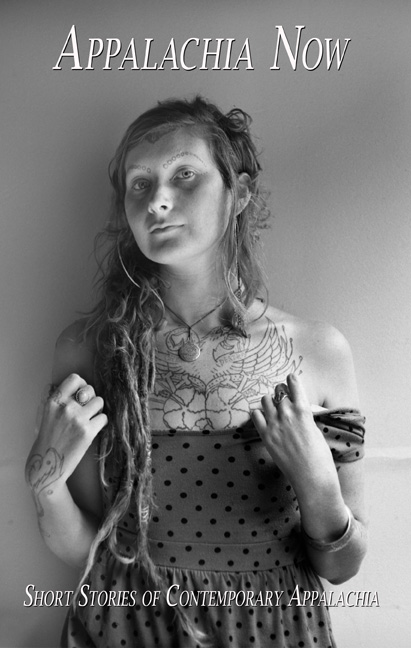
Meredith Sue Willis's
Books for Readers # 205
November 22, 2019
Read this newsletter online in its permanent location Back Issues
MSW Home About Meredith Sue Willis Contact
Honoring George Eliot's 200th birthday--November 22, 2019
See MSW's article "Five Lessons from George Eliot."
(with writing exercises) in A Journal of Practical Writing
Ernest J. Gaines died November 5, 2019.
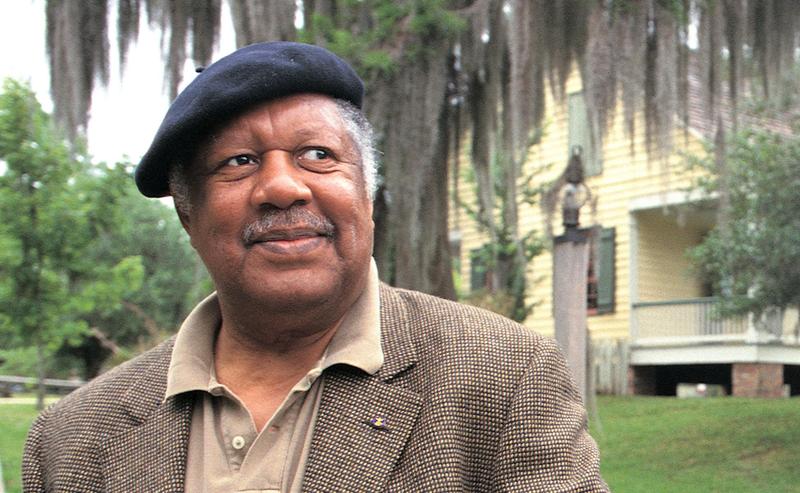
Looking for a high quality writing class in New York City? Try NYU's School of Professional Studies Writing classes--see catalog here.
Looking for Gift Books? Check out what Appalachian Mountain Books has available--with the inimitable George Brosi's commentary!
Just Published! Suzanne McConnell on Kurt Vonnegut--read a sample in The Nation:
Books for Readers # 205
In This Issue:
New Books, Announcements, and Events
Book Reviews
On the Rocks by Theodora Bishop reviewed by Jane Kimmelman
The Dramaturgical Metaphor by Ken Champion reviewed by Philip Ruthen
Where I Come From by Joan Didion
The Mill on the Floss by George Eliot
Of Love and Dust by Ernest J. Gaines
How I Became Hettie Jones by Hettie Jones
Baltimore Blues by Laura Lippman
Don't Tell 'em You're Cold by Kathy Manley reviewed by Victoria Endres
To the Bones by Val Nieman Reviewed by Deborah Clearman
Gaudy Night by Dorothy Sayers
Everyday Chaos: Technology, Complexity, and How We're Thriving in a New World of Possibility by David Weinberger reviewed by Leigh Buchannon
The Lightness of Water and Other Stories by Rhonda Browning White
Phyllis Moore on Going Cold Turkey--
Not Buying Books at Amazon.com
Shorter Reviews
Read Online
Announcements
Anthologies of Appalachian Writing
Irene Weinberger Books
Reviews, if not otherwise credited, are by MSW.
Yes, I'm going to say it: it's the 200th birthday as I write this of my favorite author, George Eliot. I adore Virginia
Woolf and Toni Morrison and Tolstoy and Saramago and, oh, the books of many current authors as well as more nineteenth century ones, (Jane Austen! Mrs. Gaskell! The Brontës! Trollope and his mom and Dickens).
But she's my favorite. Mary Ann "Polly" Evans Lewes Cross. Her books are completely different each time you read them as you change stages of life. They aren't perfect--she never quite is able, for example. to imagine a woman who lives as she did herself, with suffering and responsibility, but also with rule breaking and enormous success.
One of her best friends was the early feminist Barbara Bodichon, but she never wrote of anyone like her. She wrote instead about passionate tragic figures like Maggie Tulliver and Dorothea Brooke who yearn for the wrong thing and seek fulfillment in love. One of her most admirable characters is Mary Garth in Middlemarch who is in love, but is also disciplined and values her own integrity above the immediate gratifications of either financial security or marriage.
But nobody has ever explored deeper and wider in human personality than George Eliot. And also funny. She has a seriousness that makes some people miss it, but when she's funny, you chuckle warmly and happily and long. So let's lift a glass to her, or better yet, read or reread one of her novels. She demands leisure and a willingness to go off on occasional philosophical tangents, but it is always worth the effort.
If you are a writer, tale a look at my piece called "Five Lessons from George Eliot" in The Journal of Practical Writing.
If you've never read her books and want to give them a try, I'd suggest starting with The Mill on the Floss (see the review below); followed by Adam Bede; Middlemarch; Felix Holt; and Daniel Deronda. Try Romola only if you become a fan, or love the city of Florence and the bloody history of Savanorola. I've never read Theophrastus Such or her poems, but both The Scenes from Clerical Life and Silas Marner are worthwhile.
Then, after you've explored some or all, read Middlemarch again.
For more reviews of George Eliot's books by various people, see below.
Belinda Anderson on Middlemarch
Joel Weinberger on Middlemarch
MSW on Middlemarch
More MSW on Middlemarch
MSW on Romola
Francine Prose on Middlemarch and other classics
MSW on Felix Holt
MSW on The Mill on the Floss
The Mill on the Floss by George Eliot
I kept laying it down this time because I knew what was coming and didn't want all the bad things to happen, and bad things do happen, and there's the watery embrace of Maggie and
Tom at the end, but so much more, including Maggie's physical strength rowing the boat at the end, which I'd forgotten. I think I'd also forgotten how deeply flawed she is--desperate for love--as well as attract rive and rebellious. Her lover (19th century usage of the word) Stephen Guest is less of a villain and more of a product of his upbringing, and genuinely infatuated with Maggie. He's another strong guy not that much different from her brother Tom who sees himself as owning Maggie. Impulsive but absolutely convinced that he'll get what he wants, which is to marry Maggie.
In fact, Maggie had a lot of points at which she made the wrong decision: she could have refused to go off with Stephen in the first place, and not set herself up by committing to Tom's acceptance of Phillip Waken. Her only power seems to be when she says No, but she is extremely powerful when she does.
Meanwhile, we have the hilarious and not quite caricatured Dodson sisters–Sister Glegg, Sister Deane, Sister Pullet, and Sister Tulliver. The cult of the carefully chosen and preserved unused linen. Yet these absurd materialists stand up for family and support Maggie in the end.
I confess I like the first half better than the second, but the whole book is deeply worthwhile and a wonderful introduction to some of Eliot's themes.
George Eliot: A Biography by Gordon Haight
This is my second or third reading of the 1968 standard biography of George Eliot. Haight is very old school both in his scholarship and in many of his assumptions. He appears thoroughly disgusted by any hint of Lesbianism in some of the devotees of Eliot among younger literary women in her later years, for example. The book emphasizes Eliot's real need of a man in her life--which as far as I can see is a true need of hers, but de-emphasizes some of her personal (as opposed to literary) strengths. Haight also emphasizes how Eliot, although she inspired feminists and other nonconformers, became increasing conservative as she got older, which is , I suppose, what happens to some extent with all of us, but had also her particular situation of a non-legal marriage.
The book is wonderful, though, if you want solid scholarship and the basic facts of her life. It also gives an excellent picture of what publishing was like in mid nineteenth century England. One of the secret heroes-- I suspect Haight identifies with him--is Eliot's publisher John Blackwood.
Then of course there is the very smart, hard-working and super-protective George Lewes. Lewes and Eliot were one of the great love affairs of English history, and one that was not only about passion but partnership in the highest sense.
So I recommend this biography in the way that modern choreographers insist on ballet as a common reference point. Haight's biography covers the bases. I personally like the parts bet before she got famous and rich and spent so much time at social events with the long long lists of attendees. Name dropping, a royal or two. This reading I also got straight some of Lewes's family (his sons and their sad early deaths), and also the redoubtable Barbara (Leigh Smith) Bodichon, the feminist, from an extra-marital family.
And moving on to the twenty-first century....
Don’t Tell ’em You’re Cold by Kathy Manley Reviewed by Victoria Endres
In Don’t Tell’ em You’re Cold: a Memoir of Poverty and Resilience, Katherine Manley details the life of her impoverished family in West Virginia. Despite their constant struggle for survival, Manley and her family manage to fill spare moments with music and hopes of seeing Big Ben. The memoir opens as a young Kathy and her father hunt in the local dump for a spare bit of wood to use as a peg leg. Her father’s injuries haunt the family, keeping them trapped in what seems i
nescapable poverty as he is unable to work in the coal mines. In many ways, Manley’s memoir reads like Jeannette Walls’s The Glass Castle, yet Manley manages to avoid that romanticizing of poverty and mental illness for which Walls is often critiqued. This story paints an honest picture without glossing over or gratuitously describing its difficulties.
Manley’s narrative tells the classic tale of the Appalachian struggle for survival. The family’s separation from the coal mines gives the memoir a unique flavor. This story is not one hinging on the dangers of mine work or the coal town systems. Instead, Manley’s family lives in fear that their Welfare will be taken away, even as they work constantly to meet their most basic needs.
Kathy’s admiration for her father is childlike in its innocence. Though at times she seems unwilling to acknowledge the part he plays in the collapse of his marriage, Kathy is at all times aware of the hardships her father faces in his daily life. Her father’s support of her relationship and his encouragement in her academic ambitions seems unfailing. He implores her to visit London, telling her, “Someday, Kathy, when you get older, I want you to go see Big Ben. See for yourself what that clock looks like.” His dream of her traveling to see this icon of her childhood becomes like a mantra for her success. Always the hope of seeing Big Ben was present.
As Cat Pleska attests in the memoir’s introduction, Manley’s ability “to not only survive but also to cope with the stress and her developing fortitude” is incredible. Despite their own poverty, the family fostered a sense of generosity, giving what little they had to spare to others who were worse off than themselves. This sense of servitude is instilled in Kathy by her father from an early age and remains with her throughout her life. In Kathy’s story, we are given insight into the unfamiliar and shown the complex and difficult world of impoverished families.
In telling her story, Manley paints pictures of the beautiful and the troubling with equal respect. She is able to balance the darkest parts of her childhood with moments of joy and happiness. The reader is left with a better understanding of the wants and needs of struggling families. Manley’s artful balance of the childlike voice and the reflecting adult create a dual experience of her story. Through the eyes of the child, we are given the contemporary experience and the adult reflection hints at the lasting effects of growing up in poverty. Manley’s writing is never didactic and remains graceful throughout this eloquent memoir.
On the Rocks by Theodora Bishop Reviewed by Jane Kimmelman
Theodora Bishop’s novella is set in a seaside tourist town in New Jersey called Ship Bottom, and centers around late-twenties Eva and her mother, Leonora. We follow the two women as they prepare for a bridal shower to mark Leonora’s second marriage to Ted Turbine, a used car salesman.
Just reading the first few paragraphs of Bishop’s writing made me feel smarter. I was sending a text and felt better able to express myself, using the word “habituate” in a way I normally wouldn’t.
The young conversational voice of Eva starts the story off at a lively trot and does not slow. Too, the
author has an almost photographic sense memory. She can capture minute movements in a characters face: “Dad stared straight ahead, like he was trying to read a message etched into the wallpaper.”
Bishop is a connoisseur of quirk. She has her finger on some subtle, unspoken tropes, things that are below the threshold of what most people consciously observe. Take the women, for instance, who rely on the Michael's Crafts franchise to practice their paint-by-numbers creativity. Or Eva’s mother, who wears flip flops with plastic rosettes that she glued on herself, and is overly involved in her Pinterest page.
Bishop’s details have a deeply lived-in feel– whether it is the swirly glass bowl of stale nuts and candy that the Polish relatives put out instead of fruit, or the Shih Tzu with a genderless name like Snickerdoodle that sneezes on itself. And in similar form, her descriptions of Eva’s maternal family, the Kaminskis, do not disappoint: she paints them as ardently attached to their odd celebratory rituals, such a duck-carving scene at the peak of the pre-marital drama.
Eva’s strength as a character lies in her ability to impose a young woman’s sense of sanity onto everything she sees. This stance works well when responding to her family’s antics. She reacts with embarrassed faux-horror, for example, when her Aunt Ginny, for instance, dressed in an outsized yellow poncho, insists on making “artistic designs” in the chocolate frosting with a spatula. In a tragicomic turn of events, the author decided to finalize that particular scene with a house fire that nearly destroys her mother’s bungalow.
For all of the humor and the impeccable detail, I have to say that the story weakens after chapter twenty-four. Bishop seems to struggle with what to do after, as she informs us with suitably dark humor, Eva returns to yoga class the day after her mother’s bridal shower goes up in flames. So she has Eva accompany Mom to a weekend spa of the kind of new-age luxury that could have been dreamed up by Gwyneth Paltrow’s design team at Goop. It is the kind of place where the waitstaff fold the towels on your pillow into the shape of mating swans. If you read this stuff aloud, it would soon acquire its own laugh track. But at this point in the story, the humor is a distraction from the inner growth of the characters.
And when it comes to getting in touch with the loss that is supposedly at the center of this story, Bishop is even less secure. In one particular chapter, she makes a true effort to walk Eva through her memories of the day she lost her best friend Sebastian. And laced throughout this section is the chaotic internal question: is everything really just falling apart? The constant mention of his death though, doesn’t hold up well. It is meant to draw our attention to the fact that Eva, in the midst of the spectacle of her mother’s wedding plans, is grieving. But it reads more like a hasty reminder that there is pathos in this story– the key word being “hasty.”
But then, Bishop charms all over again with her description of the cheese fries that Eva orders at the pub. The “fluorescent Velveeta” that drenches the fingerling potatoes “like a highlighter pen had leaked all over them.” And my impulse is unequivocally to forgive everything that came before.
Finally, I love Bishop’s layering of Jersey kitsch with true, lived reflection and tenderness. As Eva herself says when she is wading through the beach house that is being rapidly consumed in flames, “Don’t worry Eva, this can’t be your life!” Indeed, who wouldn’t be pushed towards mad denial in such a situation?
Eva’s character has a distinct and likable voice that carries us with ease through the book. But if Eva has all the burden of being the narrator and the sensible daughter, then Leonora Marino, her histrionic mother, has all of the freedom to act out the book’s ebullient Id.
Leonora is often portrayed in a feathery flurry of light– the grid of the Venetian blinds that falls across her face as she stands in her walk-in closet, deciding which of her blouses to wear downstairs. Or in her kimono, with its gold-threaded accents that gleam in the sun, and the spackles of light that cover her face through the weave of her hat as she and Eva drink sangria in the backyard.
Bishop does not aim to be frivolous: she works to touch the frailty of Eva’s grief. But it is Leonora Marino who most reflects the author’s wish for this story. Her irreverence echoes the true spirit of the book itself, and is, in the end, what gives it its wisdom.
The Lightness of Water and Other Stories by Rhonda Browning WhiteThis first collection of short stories, many previously published in excellent literary magazines like Bellevue Literary Review, is the winner of the Press 53 Award for Short Fiction for 2019. Rhonda
White's collection is mostly set in West Virginia and the places West VIrgnians and other Appalachians go when they leave the state.
There are a couple of voice pieces exploring women whose values White doesn't share, but she gives them voice and lets them go where their cramped desires take them. One of them, for example, never knows that the people she wants to like her are actually laughing at her,
Several of the stories are about couples, including "Worth Fighting For," which explores a very faulty marriage with affection and some hope. The title story, "The LIghtness of Water," is historical fiction, set mostly in the early twentieth century. It begins with a collateral damage death at the Battle of Blair Mountain in West Virginia, then moves to Tennessee with Granny women and a cruel mother-in-law. This is to a large extent about the effects of women having curtailed opportunities. There is a so-called goblin baby, and two sisters who want to escape their suffering any way they can.
There are also stories where addictions cause disaster: a child's birthday is spoiled by alcohol in "All Grown up," and a marriage and much more is destroyed by addiction to meth.
The collection is given shape by an opening story and final story that have the same set of characters and deal with mountaintop removal and other kinds of earth rapine, as well as with the pride of miners and other men who work with their hands. The final story is from the point of view of the young husband Jasper, the first one from the point of view of the wife, Romie. Jasper's father, dying of Crohn's's Disease, probably caused by industrial poisoning, is an interesting character with a violent streak that he wants to use in the service of making a political point. These three are all conflicted characters with great passion and great ambivalence about their feelings toward their home, their work, the role of women, and especially their future.
Of Love and Dust by Ernest J. GainesPublished in 1967, this is Ernest J. Gaines's second book. The narrator has that sad-serious-lonely suffering that so many male mystery writers give their narrator, only in this book it seemed particularly appropriate. Narrator Jim Kelly (whose name is pronounced "Geam" by the white Cajun overseer Bonbon) is working and living more or less temporarily on a large Louisiana farm in mid twentieth century. This corner of Louisiana, however, seems to be stuck in pre-civil war times. It is called the Plantation, and the bosses are addressed as "Master." The overseer is expected to pick any woman or girl he wants for his temporary sexual pleasure.
The strengths of this solid novel are the setting, heat and farm work in the deep, deep Cajun South; the gradually accumulating cast of characters; the deepening of our sense of individuals who only appear superficial or stereotyped. The obvious case here is the young man Marcus who is sent to the Plantation to work as an alternative to jail while his trial for murder grinds through the wheels of justice. Gaines does not soften the character: Marcus did kill the man, in a knife fight. He insists he needs no help from anyone, and he wears dress shirts and shoes to work in the fields. He turns out, however, to be tougher and braver than his appearance suggests.
Also a surprise is that Bonbon the overseer, who is the usual nasty piece of casually racism, turns out to have fallen in love with one of the women he exploited, and she has responded by falling in love with him, at least a little. There there's Bonbon's wife, a skinny little poor white trash blonde, who falls for Marcus and he for her.
The tragedy here is pretty well-heralded and inevitable. Sex across race lines is not such a problem, but love is. There are also secrets and blackmail. You feel it coming, but get emotionally involved anyhow.
The interesting surprise is the strength of the community, the "Quarter," (formerly the slave quarter). There are descriptions and folkways, and a painfully funny set-piece of a drunken brawl at a private speakeasy called a "fair," and there is an elderly couple that sits on their "gallery" commenting on all the action, and a babysitter-cook called Aunt Margaret who reluctantly gets involved in the action–a whole slew of people that I realize as I write I am remember sharply and clearly. They are interesting as individuals, but act as a community.
Why doesn't anyone talk about this book much anymore? When it came out, people were making political and ideological challenges that didn't favor complex looks at Southern life, maybe. Would Stokely Carmichael, for example, have been interested in the question of whether people in highly racist settings can can actually fall in love across race lines.
My personal regret is that it took news of Mr. Gaines' death for me finally to read one of his novels.
SHORTER REVIEWS
Another review of Val Nieman's To the Bones by by Deborah Clearman
Horror stories tend to take place in the dark—in haunted houses or underground caves. TO THE BONES has plenty of both. It would be hard to imagine anything more horrifying than waking up in a mine crack surrounded by rotting corpses. Federal auditor Darrick MacBrehon escapes this living death by using bones—two femurs—to climb out of the pit. Once he staggers, reeking of death, into sweepstakes parlor staffed by Lourana Taylor the horrors continue to pile up. He discovers a once beautiful river has been transformed by a mine blowout into acidic orange sludge that can (and does) burn people alive. He also discovers that a gash on the back of his head that exposes the bone of his scull and oozes blood throughout the book despite Lourana’s efforts to bandage it—has somehow imbued him with supernatural and deadly abilities
The evil behind all this creepiness is the family Kavanagh, robber barons who have sucked the life out of generations of inhabitants of Redbird, West Virginia, while extracting coal from its ground. Among others that the Kavanaghs have disappeared is Lourana’s adult daughter Dreama. Darrick and Lourana unite in a quest to find out what has happened to Dreama and solve the mystery of the polluted river.
Darrick and Lourana are both deeply rendered, sympathetic characters, each flawed and lonely. They form the psychological heart of this novel, lending credibility to the crescendoing psychic phenomena. The crimes against society and the environment committed by the Kavanaghs give the book its gravitas. Poetic interludes written, it turns out, by the younger Kavanagh son, speak to Neiman’s large ambition to lift horror from genre to literature. Spot-on dialogue and vivid prose paint a portrait of a tortured and beloved place.
Finally we return to the bones—in a crypt under the Kavanagh mansion, where flesh melts before the reader’s eyes and exhausted seams of coal could be metaphor for the bones of the earth.
(Also see the review by Ed Davis in Issue 203)
Baltimore Blues by Laura Lippman
I waited a long time for this first Tess Monaghan book on the library ebook waiting list. Lippman is apparently super popular, but I found the narrator of her story too light: everything wry, self-deprecating for effect. I got tired quickly of the tone of Chicklit-protagonist-turns sleuth. Still it was written smoothly, seemed reasonability well-plotted, and once again the place-- Baltimore-- made the book for me.
How I Became Hettie Jones by Hettie Jones
I liked the woman Hettie Jones a lot, and also the story of what it was like back in the bohemian Beatnik Village in 1950's New York City. Once again, you see the men getting the glory and the women getting the diapers. And dinner and clean up duty. Hettie Jones, of course, was much more-editor, organizer, author-- even though she has never had the fame her ex-husband Leroi Jones/Amiri Baraka had. Part of the story is their early charming interracial love affair; part of it is the story of how he was became torn between his white wife and two daughters, and a new life (and wife) in Black Nationalism.
Hettie lands on her feet repeatedly–embraces the world they were part of, seems to have no regrets. She figured out how to make a living, raised her and Jones/Baraka's daughters to become highly educated and accomplished New York women.
One of the minor things I was struck by is how we used to have much lower standards for the necessities of living: those old Village flats with no air conditioning and crowds of poets crashing on the couches and in the bathtubs don't sound like nearly as much fun as I once thought they were.
It's a powerful piece of witness, and well-worth reading.
Gaudy Night by Dorothy Sayers
I picked this from a list of novels by women mystery writers from the past , and this was the first one available from the library for Kindle. Besides, I'd always wondered about Dorothy Sayers. Her biography makes her sound like a very interesting woman.
Oxford University and environs is one of the best things in the novel. But the book itself had some very tedious parts, and, boy, did I not get the charm and magnetism of her hero Lord Peter Wimsey! What I did like was the main character Harriet's moment of realizing she was in love with him, Lord Peter W., by observing his hands. She feels the call of his body in a way that is really nicely done.
There were too many literary quotations for me (okay, I didn't get most of it and felt stupid), and I had trouble distinguishing among the suspects, all female scholars and dons. Also, the attitudes were too Tory-conservative for me. I'll accept that world view from, say, Trollope who was mid-nineteenth century, but this one is from the century of my birth. Breeding and bloodlines are are given far too much credence for me. And the perpetrator has a definite taint of working class blood, as if that at least partially explained the crime.
This was supposed to be the last Wimsey mystery (it wasn't), so I'll probably read an early one to see if I agree with myself.
The Dramaturgical Metaphor by Ken Champion reviewed by Philip Ruthen
If you're expecting to read titles of comparative texts by well known writers littered throughout a tribute to Ken Champion, you are mistaken - he's not that kind of writer. The author is rare amongst his peers in social and literary relevance for he can present the lost, the mistaken, the sophistication doggedly clung to in despair, and bring into being the deepest, unspoken tenderness. Following the psycho-geography of much of Urban Narratives, a story collection whose exploration of themes and ideas are broadened into similarly disturbed planes in The Dramaturgical Metaphor, Champion introduces a protagonist randomly and artfully directing Kundera-esque scenarios across Europe to escape from a damaged ego while searching for an idealised one. This new novel is not only to be admired for style and pace, but to be felt, to be angry at.
Where I Come From by Joan Didion
The California history is fascinating-- Didion's people are descendants of the "crossers" of the Rockies who live with illusions of self-sufficiency. There is not, however, a strong through-line to the book, so I kept getting distracted and laying it down. A number of sections stand alone, almost like monographs (were they New Yorker pieces?). One concerned the city of Lakewood outside of LA that was developed specifically for middle class white people who worked at McDonald Douglass, and how aerospace left them stranded. Part of it is about a gang of cosseted high school athletes who perpetrate a rape.
Didion's sentences are always interesting, but she also has passages that are heavily self- dramatizing. They don't spoil her good stuff, but I could do with fewer of them. I continue, however, to look forward to reading her books.
Good Reading Online
Suzanne Martinez's latest stories:
https://flashfictionmagazine.com/blog/2019/10/28/there-are-no-whys/#more-30894
https://www.broadkillreview.com/single-post/2019/05/28/The-Cinderella-of-Sunset-Park
http://www.scmwrites.com
Literary Hub's Best 20 novels of the Decade ....
....includes several that I've never heard of and several that I like, if not love, including A Visit from the Goon Squad by Jennifer Egan; The Fifth Season by N.K. Jemison; The Overstory by Richard Powers; Americanah by Chimamanda Ngozi Adichie; plus honorable mentions like Tana French's Faithful Place; Attica Locke's Black Water Rising; Roundhouse by Louise Erdrich, and Anthony Doerr's All the Light We Cannot See --- enough books to keep you busy for the next decade!
Ten Novels That Rewrite History
Phyllis Moore Isn't Buying Books from Amazon Anymore
Phyllis Moore writes: " I'm holding fast on 'No Amazon' but have learned I can't read and return either. The problem seems to be I'm only interesting in reading a book when it calls out to me. I want them here and in my stack. Two of the unread I am reluctant to return are NORA: THE REAL LIFE OF MOLLY BLOOM and WON OVER: REFLECTIONS OF A FEDERAL JUDGE ON HIS JOURNEY FROM JIM CROW MISSISSIPPI.
"Both sound intriguing but....not right now. I'll drop them off at the library today. My next attempt: to create a list of the titles I want to read and then do e-books from the library one by one. Somehow, this sounds horrible.
"Needless to say, I'm still reading. I'm eager to read the memoir FATHERLESS by Keith Maillard and my recent favorite anthology is FEMININE RISING, edited by Andrea Feteka of Charleston, WV."
ANNOUNCEMENTS AND NEWS
Everyday Chaos: Technology, Complexity, and How We're Thriving in
a New World of Possibility by David Weinberger reviewed by Leigh Buchannon in Inc. Magazine--see the whole article here.)
[David] Weinberger, for decades one of the most prescient and philosophical thinkers about the internet, here tackles the broader subject of how technology influences the way we understand and function in the world. Moving back and forth between ancient history and 10 minutes from now, Everyday Chaos explains that fixed-future ideas like progress and preparation are insufficient in the face of multiplying layers of complexity. Yet as our decision-making is overtaken by machines, it becomes possible to operate without our own hypotheses about what will work. Weinberger advocates for operating in a state of "unanticipation" in which we leave options open (think minimal viable products, agile development, and black swans). In this way of looking at the world, traditional strategy can be dangerous. Obscurity is your friend.
Kelly Watt's Mad Dog--published in the USA for the first time!
Roundabout by Elaine Durbach
When Felix, the love of Sally's life, dies suddenly just a few years after they've finally settled down together, her grief is tangled with anger. Striving to understand what kept them apart for so long, she traces memories from their student days in South Africa through intertwined paths in the US, and back again to their wind-battered seaside cottage outside Cape Town. Old insecurities threaten to undermine the hard-earned strength she needs to move ahead.
This is Elaine Durbach's debut novel. It draws on her background as a journalist in South Africa and the US, interviewing people of all kinds for two non-fiction books and articles for newspapers and magazines. Her work has garnered press awards in both countries and won her a World Press Institute Fellowship. Her short stories have appeared in publications of the Montclair Write Group. She lives with her husband and son in Maplewood, New Jersey.
The Armageddon Two-Step-- A Novel by Michael Loyd Gray
The Armageddon Two-Step is a novel about reality and truth built for the Age of Trump; a comedic farce tinted with magical-realism about a young man named Shelby Albert Goddard who saves the world and then must live with the consequences.
"The Armageddon Two-Step is a clever, witty, and frequently biting tale of unlikely fame, carved out by a genuine storyteller." —Anthony Squiers, author of Madness & Insanity
Homegrown, the first book of Johnny Sundstrom's new trilogy, Land of the Evergreens, now available as an ebook on Amazon or from the author siwash@peak.org. The trilogy aims to provide a cultural memoir of the 1
980s, that transitional decade midway between the 1960s and the new 2000-millennium. Portrayed in these books are the Marijuana sub-culture, Cocaine for Arms exchanges with Central America, Horse Racing Scandals,
and Old Growth Timber Battles. All of this and more, inescapably permeated by the deep emotional after-effects of one generation’s experience of the lost imperialist war in SE Asia. Highlighted by the challenges encountered in one man’s fugitive life underground, this was an era characterized by the confusions of facing a future where relationships unpredictably ebb and flow, and political changes and shifts become the norm. This first book focuses on the people and conflicts involved in the so-called Pot War of ’84, and its effects on rural western Oregon.
Johnny Sundstrom is a third-generation Westerner and rancher-conservationist who’s been living on his family’s land in Deadwood, Oregon for nearly five decades. During that time, he has seen the collapse of the historic local timber economy, the listing of regionally endangered fish and bird species, and a transformation of the marijuana culture into a legal business model. He graduated from Williams College with a degree in English Literature, and has written extensively over the years with four historical novels on the settlement of the West, published by and available from Xlibris, from the Author <siwash@peak.org> (preferred),or Amazon.
IRENE WEINBERGER BOOKS:
SOME ANTHOLOGIES OF APPALACHIAN LITERATURE

A NOTE ABOUT AMAZON.COM
I have a lot of friends and colleagues who despise Amazon. There is a discussion about some of the issues back in Issue # 184, as well as even older comments from Jonathan Greene and others here.
The largest unionized bookstore in America has a web store at Powells Books. Some people prefer shopping online there to shopping at Amazon.com. An alternative way to reach Powell's site and support the union is via http://www.powellsunion.com. Prices are the same but 10% of your purchase will go to support the union benefit fund.
WHERE TO FIND BOOKS MENTIONED IN THIS NEWSLETTER
If a book discussed in this newsletter has no source mentioned, don’t forget that you may be able to borrow it from your public library as either a hard copy or as an ebook. You may also buy or order from your local independent bookstore. (To find a bricks-and-mortar store, click the "shop indie" logo left).
To buy books online, I often use Bookfinder or Alibris. Bookfinder gives the price with shipping and handling, so you can see what you really have to pay.
Another source for used and out-of-print books is All Book Stores. Also consider Paperback Book Swap, a postage-only way to trade books with other readers.
Ingrid Hughes suggests "a great place for used books which sometimes turn out to be never-opened hard cover books is Biblio. I've bought many books from them, often for $4 including shipping."
If you are using an electronic reader (all kinds), don't forget free books at the Gutenberg Project—mostly classics, and free, free, free! More and more public libraries are now offering electronic books for borrowing as well.
Kobobooks.com sells e-books for independent brick-and-mortar bookstores.
RESPONSES TO THIS NEWSLETTER
Please send responses to this newsletter and suggestions directly to Meredith Sue Willis . Unless you request otherwise, your responses may be edited for length and published in this newsletter.
BACK ISSUES click here.
LICENSE
Books for Readers Newsletter by Meredith Sue Willis is licensed under a Creative Commons Attribution-NoDerivs 3.0 Unported License. Permissions beyond the scope of this license may be available at http://www.meredithsuewillis.com. Some individual contributors may have other licenses.
Meredith Sue Willis, the producer of this occasional newsletter, is a writer and teacher and enthusiastic reader. Her books have been published by Charles Scribner's Sons, HarperCollins, Ohio University Press, Mercury House, West Virginia University Press, Monteymayor Press, Teachers & Writers Press, Hamilton Stone Editions, and others. She teaches at New York University's School of Professional Studies.
BACK ISSUES:
#206 Books by Timothy Snyder, Bonnie Proudfoot, David Weinberger, Pat Barker, Michelle Obama, Richard Powers, Anthony Powell, and more.
#205 Books by George Eliot, Ernest Gaines, Kathy Manley, Rhonda White; reviews by Jane Kimmelman, Victoria Endres, Deborah Clearman.
#204 Books by Larissa Shmailo, Joan Didion, Judith Moffett, Delia Owens, Heidi Julavits, Susan Carol Scott, Trollope, Dorothy B. Hughes, and more.
#203 Books by Tana French, Burt Kimmelman, Ann Petry, Mario Puzo, Anna Egan Smucker, Virginia Woolf, Val Nieman, Idra Novey, Roger Wall.
#202 Books by J.G. Ballard, Peter Carey, Arthur Dobrin, Lisa Haliday, Birgit Mazarath, Roger Mitchell, Natalie Sypolt, and others.
#201 Books by Marc Kaminsky, Jessica Wilkerson, Jaqueline Woodson, Eliot Parker, Barbara Kingsolver. Philip Roth, George Eliot and more.
#200 Books by Zola, Andrea Fekete, Thomas McGonigle, Maggie Anderson, Sarah Dunant, J.G. Ballard, Sarah Blizzard Robinson, and more.
#199 Reviews by Ed Davis and Phyllis Moore. Books by Elizabeth Strout, Thomas Mann, Rachel Kushner, Craig Johnson, Richard Powers and more.
#198 Reviews by Belinda Anderson, Phyllis Moore, Donna Meredith, Eddy Pendarvis, and Dolly Withrow. Eliot, Lisa Ko, John Ehle, Hamid, etc.
#197 Joan Silber, Chimamanda Ngozi Adichie, Alexander Hamilton, Eudora Welty, Middlemarch yet again, Greta Ehrlich, Edwina Pendarvis.
#196 Last Exit to Brooklyn; Joan Didion; George Brosi's reviews; Alberto Moravia; Muriel Rukeyser; Matthew de la Peña; Joyce Carol Oates
#195 Voices for Unity; Ramp Hollow, A Time to Stir, Patti Smith, Nancy Abrams, Conrad, N.K. Jemisin, Walter Mosely & more.
#194 Allan Appel, Jane Lazarre, Caroline Sutton, Belinda Anderson on children's picture books.
#193 Larry Brown, Phillip Roth, Ken Champion, Larissa Shmailo, Gillian Flynn, Jack Wheatcroft, Hilton Obenziner and more.
#192 Young Adult books from Appalachia; Virginia Woolf's To the Lighthouse; Michael Connelly; Middlemarch; historical murders in Appalachia.
#191 Oliver Sacks, N.K. Jemisin, Isabella and Ferdinand and their descendents, Depta, Highsmith, and more.
#190 Clearman, Eyes Glowing at the Edge of the Woods, Doerr, Octavia Butler, Colson Whitehead, Miss Fourth of July, Goodbye and more.
#189 J.D. Vance; Mitch Levenberg; Phillip Lopate; Barchester Towers; Judith Hoover; ; Les Liaisons Dangereuses; short science fiction reviews.
#188 Carmen Ferreiro-Esteban; The Hemingses of Monticello; Marc Harshman; Jews in the Civil War; Ken Champion; Rebecca West; Colum McCann
#187 Randi Ward, Burt Kimmelman, Llewellyn McKernan, Sir Walter Scott, Jonathan Lethem, Bill Luvaas, Phyllis Moore, Sarah Cordingley & more
#186 Diane Simmons, Walter Dean Myers, Johnny Sundstrom, Octavia Butler & more
#185 Monique Raphel High; Elizabeth Jane Howard; Phil Klay; Crystal Wilkinson
#184 More on Amazon; Laura Tillman; Anthony Trollope; Marily Yalom and the women of the French Revolution; Ernest Becker
#183 Hilton Obenzinger, Donna Meredith, Howard Sturgis, Tom Rob Smith, Daniel José Older, Elizabethe Vigée-Lebrun, Veronica Sicoe
#182 Troy E. Hill, Mitchell Jackson, Rita Sims Quillen, Marie Houzelle, Frederick Busch, more Dickens
#181 Valerie Nieman, Yorker Keith, Eliot Parker, Ken Champion, F.R. Leavis, Charles Dickens
#180 Saul Bellow, Edwina Pendarvis, Matthew Neill Null, Judith Moffett, Theodore Dreiser, & more
#179 Larissa Shmailo, Eric Frizius, Jane Austen, Go Set a Watchman and more
#178 Ken Champion, Cat Pleska, William Demby's Beetlecreek, Ron Rash, Elizabeth Gaskell, and more.
#177 Jane Hicks, Daniel Levine, Constance Fenimore Woolson, Ken Chamption, Patricia Harman
#176 Robert Gipe, Justin Torres, Marilynne Robinson, Velma Wallis, Larry McMurty, Charlotte Brontë, Henry James, Fumiko Enchi, Shelley Ettinger
#175 Lists of what to read for the new year; MOUNTAIN MOTHER GOOSE: CHILD LORE OF WEST VIRGINIA; Peggy Backman
#174 Christian Sahner, John Michael Cummings, Denton Loving, Madame Bovary
#173 Stephanie Wellen Levine, S.C. Gwynne, Ed Davis's Psalms of Israel Jones, Quanah Parker, J.G. Farrell, Lubavitcher girls
#172 Pat Conroy, Donna Tartt, Alice Boatwright, Fumiko Enchi, Robin Hobb, Rex Stout
#171 Robert Graves, Marie Manilla, Johnny Sundstrom, Kirk Judd
#170 John Van Kirk, Carter Seaton,Neil Gaiman, Francine Prose, The Murder of Helen Jewett, Thaddeus Rutkowski
#169 Pearl Buck's The Exile and Fighting Angel; Larissa Shmailo; Liz Lewinson; Twelve Years a Slave, and more
#168 Catherine the Great, Alice Munro, Edith Poor, Mitch Levenberg, Vonnegut, Mellville, and more!
#167 Belinda Anderson; Anne Shelby; Sean O'Leary, Dragon tetralogy; Don Delillo's Underworld
#166 Eddy Pendarvis on Pearl S. Buck; Theresa Basile; Miguel A. Ortiz; Lynda Schor; poems by Janet Lewis; Sarah Fielding
#165 Janet Lewis, Melville, Tosltoy, Irwin Shaw!
#164 Ed Davis on Julie Moore's poems; Edith Wharton; Elaine Drennon Little's A Southern Place; Elmore Leonard
#163 Pamela Erens, Michael Harris, Marlen Bodden, Joydeep Roy-Battacharya, Lisa J. Parker, and more
#162 Lincoln, Joseph Kennedy, Etel Adnan, Laura Treacy Bentley, Ron Rash, Sophie's Choice, and more
#161 More Wilkie Collins; Duff Brenna's Murdering the Mom; Nora Olsen's Swans & Klons; Lady Audley's Secret
#160 Carolina De Robertis, The Immortal Life of Henrietta Lacks, Ross King's The Judgment of Paris
#159 Tom Jones. William Luvaas, Marc Harshman, The Good Earth, Lara Santoro, American Psycho
#158 Chinua Achebe's Man of the People; The Red and the Black; McCarthy's C.; Farm City; Victor Depta;Myra Shapiro
#157 Alice Boatwright, Reamy Jansen, Herta Muller, Knut Hamsun, What Maisie Knew; Wanchee Wang, Dolly Withrow.
#156 The Glass Madonna; A Revelation
#155 Buzz Bissinger; reader suggestions; Satchmo at the Waldorf
#154 Hannah Brown, Brad Abruzzi, Thomas Merton
#153 J.Anthony Lukas, Talmage Stanley's The Poco Fields, Devil Anse
#152 Marc Harshman guest editor; John Burroughs; Carol Hoenig
#151 Deborah Clearman, Steve Schrader, Paul Harding, Ken Follet, Saramago-- and more!
#150 Mitch Levenberg, Johnny Sundstrom, and Isabel Wilkerson's The Warmth of Other Suns.
#149 David Weinberger's Too Big to Know; The Shining; The Tiger's Wife.
#148 The Moonstone, Djibouti, Mark Perry on the Grimké family
#147 Jane Lazarre's new novel; Johnny Sundstrom; Emotional Medicine Rx; Walter Dean Myers, etc.
#146 Henry Adams AGAIN! Also,Fun Home: a Tragicomic
#145 Henry Adams, Darnell Arnoult, Jaimy Gordon, Charlotte Brontë
#144 Carter Seaton, NancyKay Shapiro, Lady Murasaki Shikibu
#143 Little America; Guns,Germs, and Steel; The Trial
#142 Blog Fiction, Leah by Seymour Epstein, Wolf Hall, etc.
#141 Dreama Frisk on Hilary Spurling's Pearl Buck in China; Anita Desai; Cormac McCarthy
#140 Valerie Nieman's Blood Clay, Dolly Withrow
#139 My Kindle, The Prime Minister, Blood Meridian
#138 Special on Publicity by Carter Seaton
#137 Michael Harris's The Chieu Hoi Saloon; Game of Thrones; James Alexander Thom's Follow the River
#136 James Boyle's The Creative Commons; Paola Corso, Joanne Greenberg, Monique Raphel High, Amos Oz
#135 Reviews by Carole Rosenthal, Jeffrey Sokolow, and Wanchee Wang.
#134 Daniel Deronda, books with material on black and white relations in West Virginia
#133 Susan Carpenter, Irene Nemirovsky, Jonathan Safran Foer, Kanafani, Joe Sacco
#132 Karen Armstrong's A History of God; JCO's The Falls; The Eustace Diamonds again.
#131 The Help; J. McHenry Jones, Reamy Jansen, Jamie O'Neill, Michael Chabon.
#130 Lynda Schor, Ed Myers, Charles Bukowski, Terry Bisson, The Changing Face of Anti-Semitism
#129 Baltasar and Blimunda; Underground Railroad; Navasky's Naming Names, small press and indie books.
#128 Jeffrey Sokolow on Histories and memoirs of the Civil Rights Movement
#127 Olive Kitteridge; Urban fiction; Shelley Ettinger on Joyce Carol Oates
#126 Jack Hussey's Ghosts of Walden, The Leopard , Roger's Version, The Reluctanct Fundamentalist
#125 Lee Maynard's The Pale Light of Sunset; Books on John Brown suggested by Jeffrey Sokolow
#124 Cloudsplitter, Founding Brothers, Obenzinger on Bradley's Harlem Vs. Columbia University
#123 MSW's summer reading round-up; Olive Schreiner; more The Book Thief; more on the state of editing
#122 Left-wing cowboy poetry; Jewish partisans during WW2; responses to "Hire a Book Doctor?"
#121 Jane Lazarre's latest; Irving Howe's Leon Trotsky; Gringolandia; "Hire a Book Doctor?"
#120 Dreama Frisk on The Book Thief; Mark Rudd; Thulani Davis's summer reading list
#119 Two Histories of the Jews; small press books for Summer
#118 Kasuo Ichiguro, Jeanette Winterson, The Carter Family!
#117 Cat Pleska on Ann Pancake; Phyllis Moore on Jayne Anne Phillips; and Dolly Withrow on publicity
#116 Ann Pancake, American Psycho, Marc Harshman on George Mackay Brown
#115 Adam Bede, Nietzsche, Johnny Sundstrom
#114 Judith Moffett, high fantasy, Jared Diamond, Lily Tuck
#113 Espionage--nonfiction and fiction: Orson Scott Card and homophobia
#112 Marc Kaminsky, Nel Noddings, Orson Scott Card, Ed Myers
#111 James Michener, Mary Lee Settle, Ardian Gill, BIll Higginson, Jeremy Osner, Carol Brodtick
#110 Nahid Rachlin, Marion Cuba on self-publishing; Thulani Davis, The Road, memoirs
#109 Books about the late nineteen-sixties: Busy Dying; Flying Close to the Sun; Looking Good; Trespassers
#108 The Animal Within; The Ground Under My Feet; King of Swords
#107 The Absentee; Gorky Park; Little Scarlet; Howl; Health Proxy
#106 Castle Rackrent; Harry Potter and the Deathly Hallows; More on Drown; Blindness & more
#105 Everything is Miscellaneous, The Untouchable, Kettle Bottom by Diane Gilliam Fisher
#104 Responses to Shelley on Junot Diaz and more; More best books of 2007
#103 Guest Editor: Shelley Ettinger and her best books of 2007
#102 Saramago's BLINDNESS; more on NEVER LET ME GO; George Lies on Joe Gatski
#101 My Brilliant Career, The Scarlet Letter, John Banville, Never Let Me Go
#100 The Poisonwood Bible, Pamela Erens, More Harry P.
#99 Jonathan Greene on Amazon.com; Molly Gilman on Dogs of Babel
#98 Guest editor Pat Arnow; more on the Amazon.com debate
#97 Using Thomas Hardy; Why I Write; more
#96 Lucy Calkins, issue fiction for young adults
#95 Collapse, Harry Potter, Steve Geng
#94 Alice Robinson-Gilman, Maynard on Momaday
#93 Kristin Lavransdatter, House Made of Dawn, Leaving Atlanta
#92 Death of Ivan Ilych; Memoirs
#91 Richard Powers discussion
#90 William Zinsser, Memoir, Shakespeare
#89 William Styron, Ellen Willis, Dune, Germinal, and much more
#88 Sandra Cisneros's Caramelo
#87 Wings of the Dove, Forever After (9/11 Teachers)
#86 Leora Skolkin-Smith, American Pastoral, and more
#85 Wobblies, Winterson, West Virginia Encyclopedia
#84 Karen Armstrong, Geraldine Brooks, Peter Taylor
#83 3-Cornered World, Da Vinci Code
#82 The Eustace Diamonds, Strapless, Empire Falls
#81 Philip Roth's The Plot Against America , Paola Corso
#80 Joanne Greenberg, Ed Davis, more Murdoch; Special Discussion on Memoir--Frey and J.T. Leroy
#79 Adam Sexton, Iris Murdoch, Hemingway
#78 The Hills at Home; Tess of the D'Urbervilles; Jean Stafford
#77 On children's books--guest editor Carol Brodtrick
#76 Mary Lee Settle, Mary McCarthy
#75 The Makioka Sisters
#74 In Our Hearts We Were Giants
#73 Joyce Dyer
#72 Bill Robinson WWII story
#71 Eva Kollisch on G.W. Sebald
#70 On Reading
#69 Nella Larsen, Romola
#68 P.D. James
#67 The Medici
#66 Curious Incident,Temple Grandin
#65 Ingrid Hughes on Memoir
#64 Boyle, Worlds of Fiction
#63 The Namesame
#62 Honorary Consul; The Idiot
#61 Lauren's Line
#60 Prince of Providence
#59 The Mutual Friend, Red Water
#58 AkÉ, Season of Delight
#57 Screaming with Cannibals
#56 Benita Eisler's Byron
#55 Addie, Hottentot Venus, Ake
#54 Scott Oglesby, Jane Rule
#53 Nafisi,Chesnutt, LeGuin
#52 Keith Maillard, Lee Maynard
#51 Gregory Michie, Carter Seaton
#50 Atonement, Victoria Woodhull biography
#49 Caucasia
#48 Richard Price, Phillip Pullman
#47 Mid- East Islamic World Reader
#46 Invitation to a Beheading
#45 The Princess of Cleves
#44 Shelley Ettinger: A Few Not-so-Great Books
#43 Woolf, The Terrorist Next Door
#42 John Sanford
#41 Isabelle Allende
#40 Ed Myers on John Williams
#39 Faulkner
#38 Steven Bloom No New Jokes
#37 James Webb's Fields of Fire
#36 Middlemarch
#35 Conrad, Furbee, Silas House
#34 Emshwiller
#33 Pullman, Daughter of the Elm
#32 More Lesbian lit; Nostromo
#31 Lesbian fiction
#30 Carol Shields, Colson Whitehead
#29 More William Styron
#28 William Styron
#27 Daniel Gioseffi
#26 Phyllis Moore
#25 On Libraries....
#24 Tales of the City
#23 Nonfiction, poetry, and fiction
#22 More on Why This Newsletter
#21 Salinger, Sarah Waters, Next of Kin
#20 Jane Lazarre
#19 Artemisia Gentileschi
#18 Ozick, Coetzee, Joanna Torrey
#17 Arthur Kinoy
#16 Mrs. Gaskell and lots of other suggestions
#15 George Dennison, Pat Barker, George Eliot
#14 Small Presses
#13 Gap Creek, Crum
#12 Reading after 9-11
#11 Political Novels
#10 Summer Reading ideas
#9 Shelley Ettinger picks
#8 Harriette Arnow's Hunter's Horn
#7 About this newsletter
#6 Maria Edgeworth
#5 Tales of Good and Evil; Moon Tiger
#4 Homer Hickam and The Chosen
#3 J.T. LeRoy and Tale of Genji
#2 Chick Lit
#1 About this newsletter
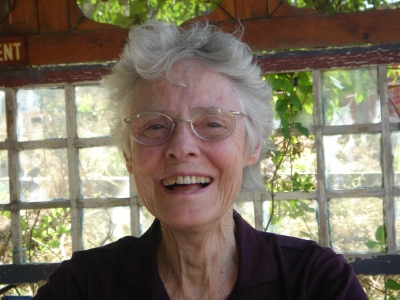
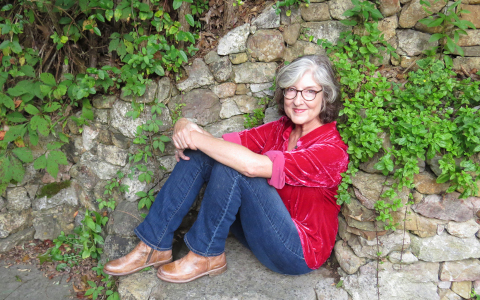
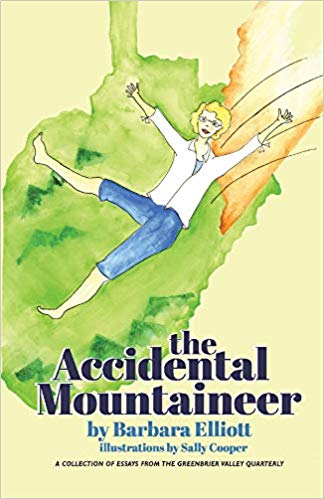
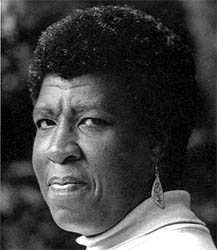
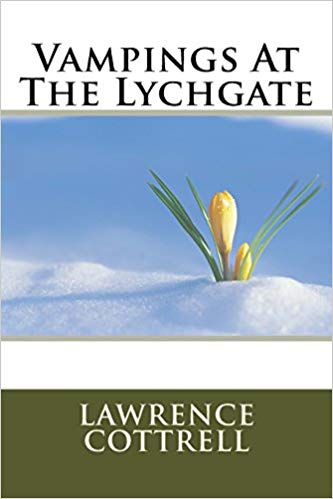
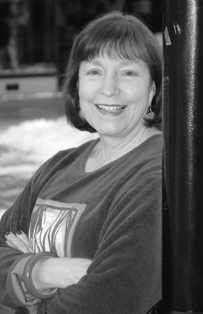
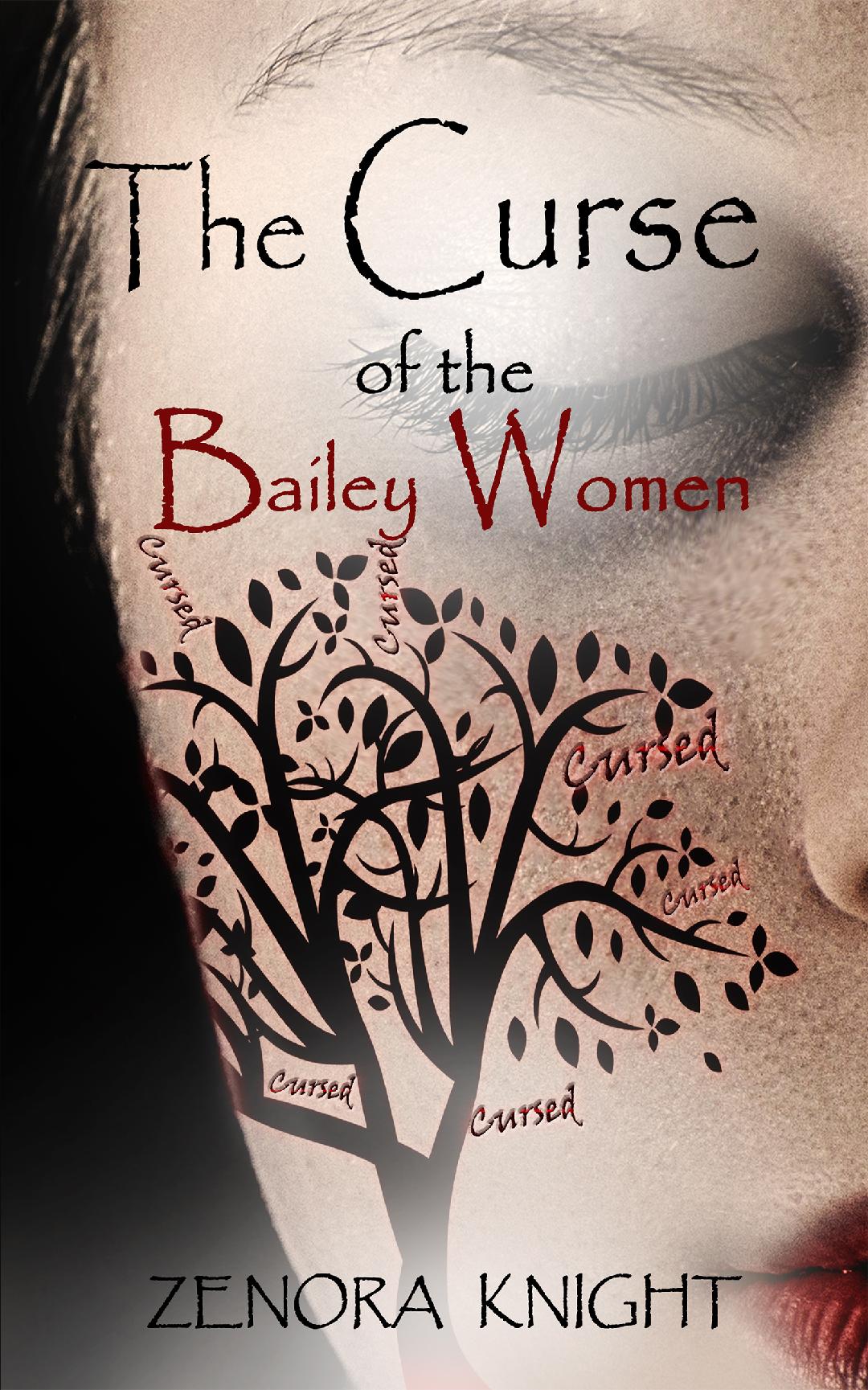
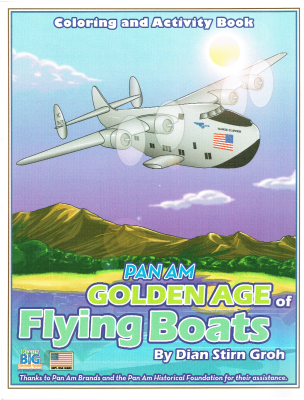
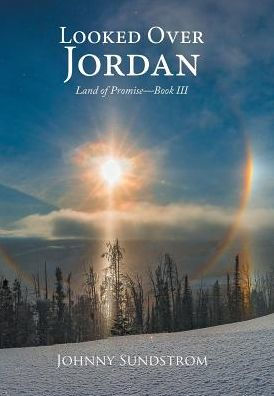
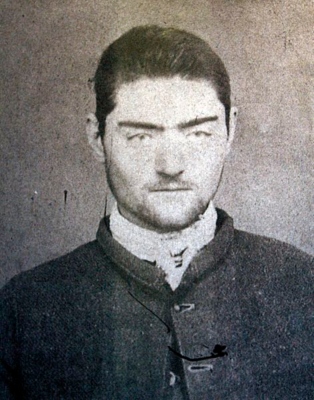
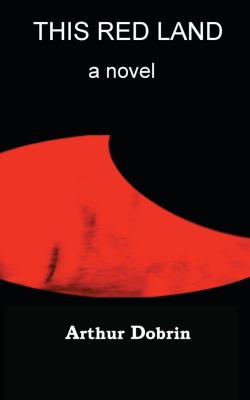


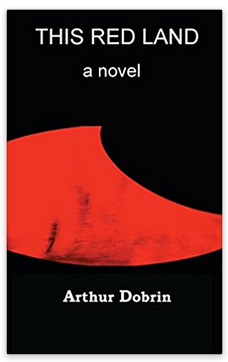
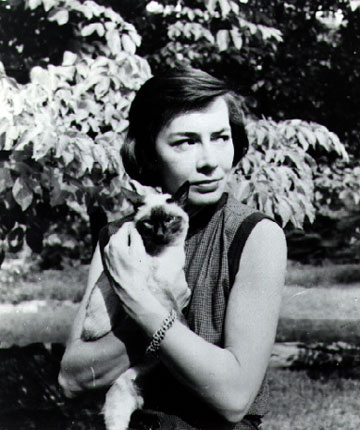
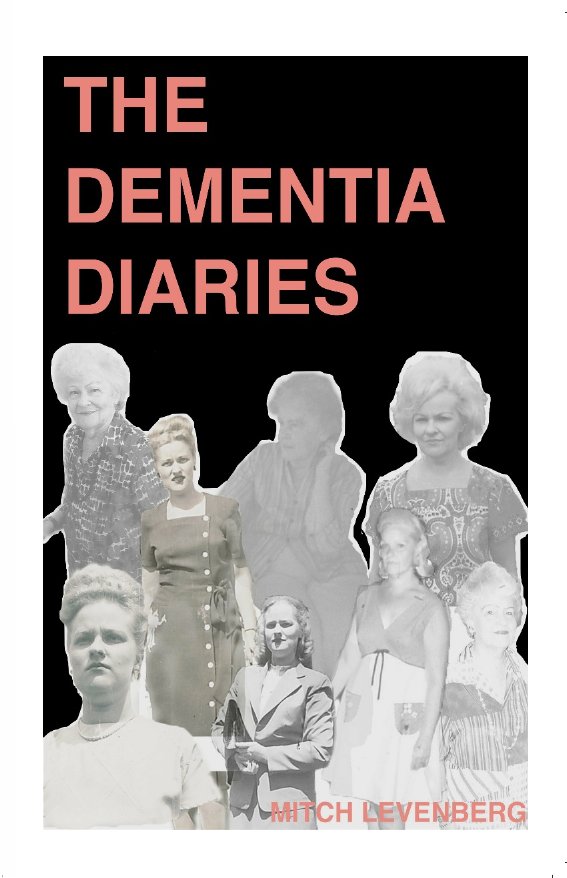
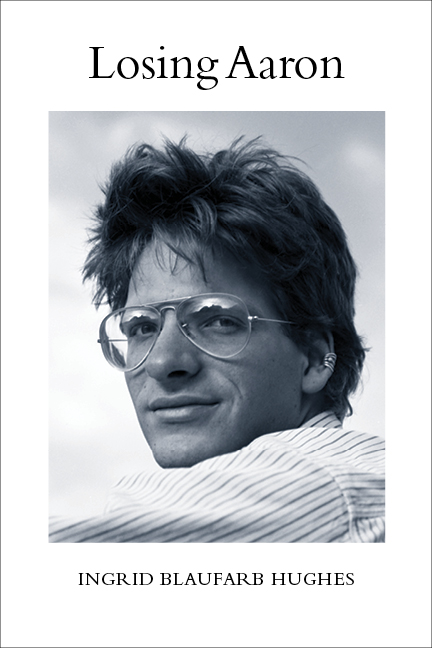
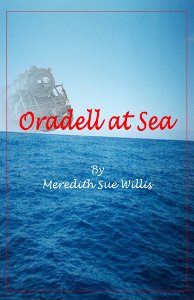
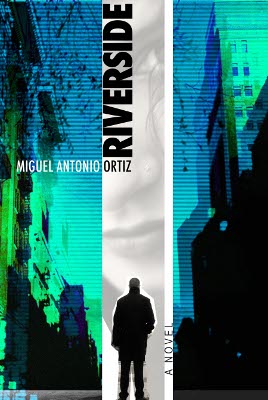
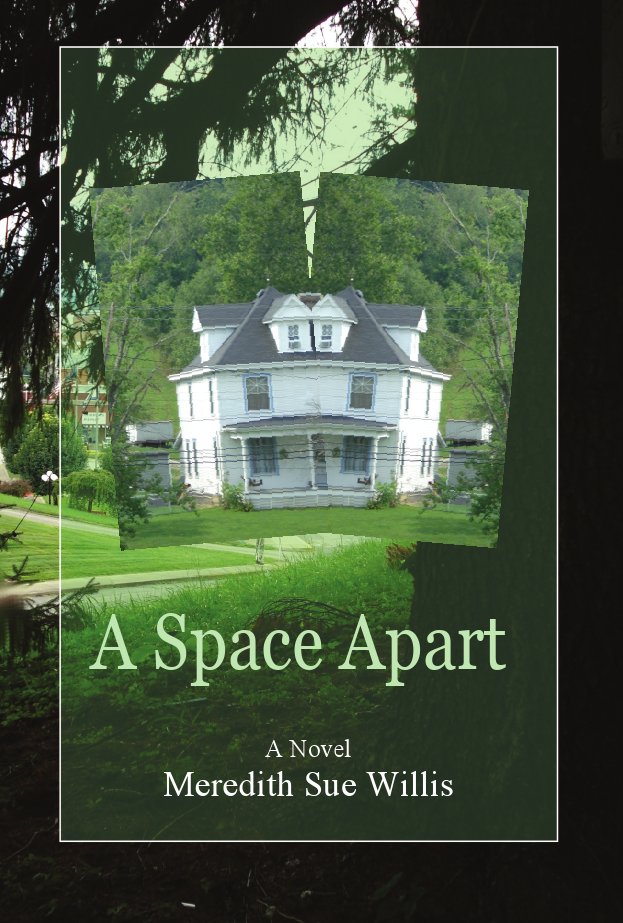
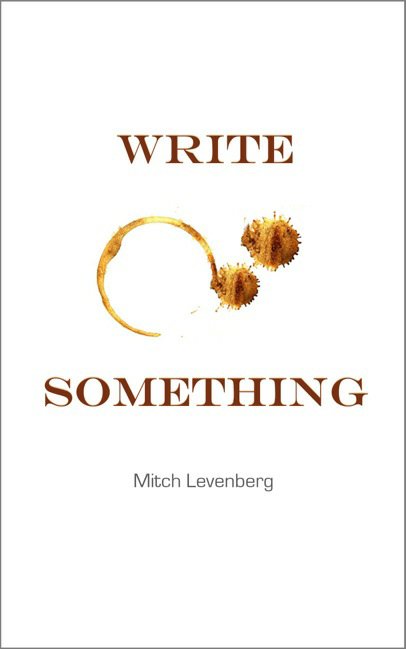
.jpg)
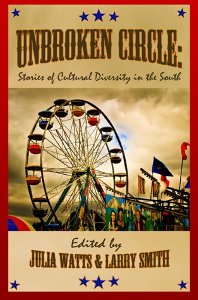
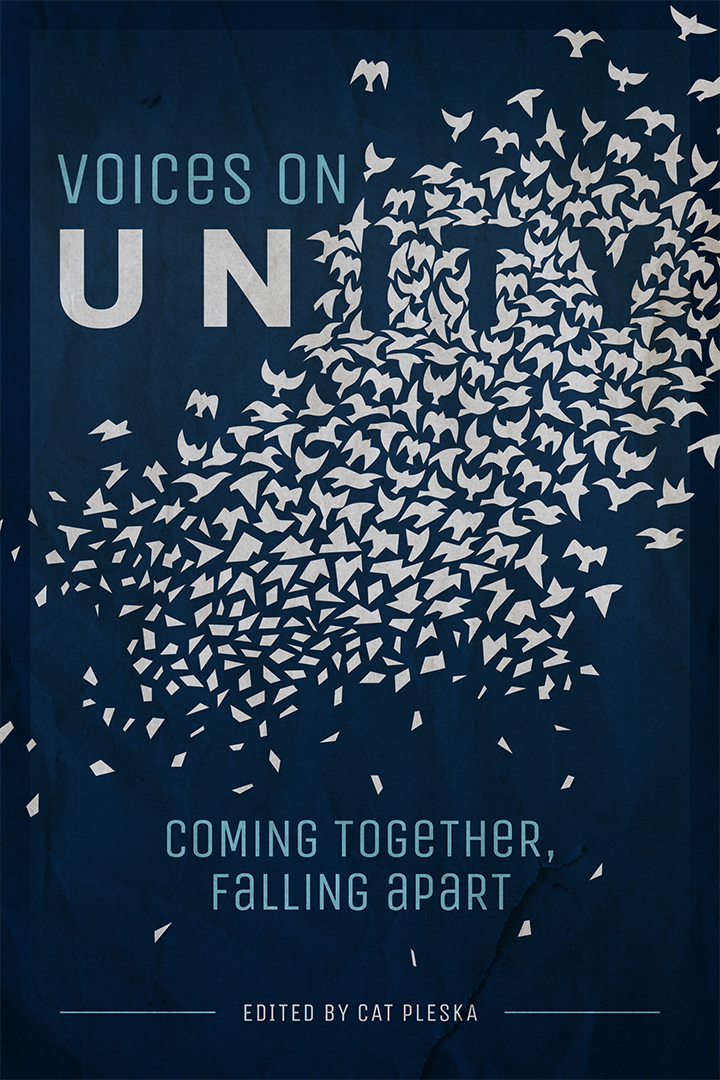
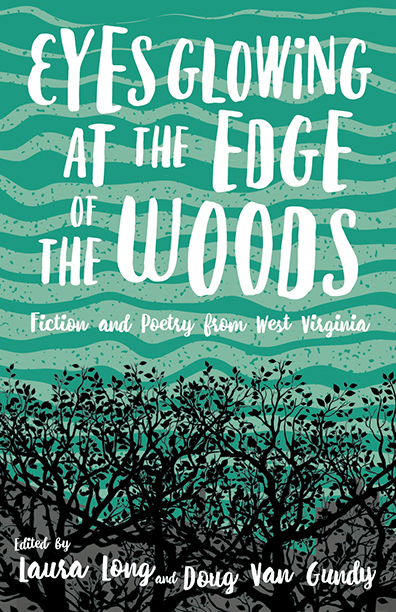
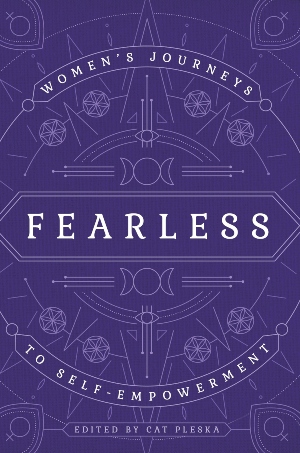
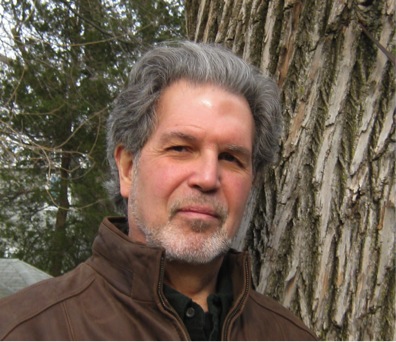

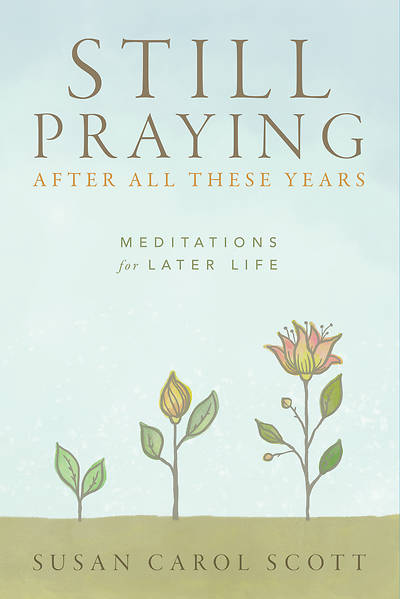

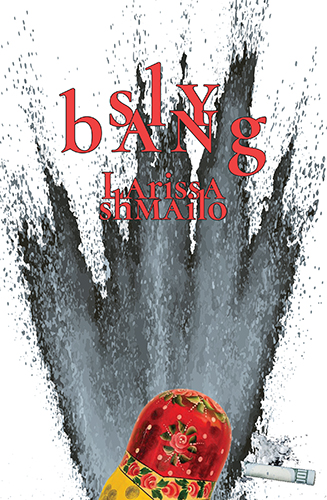
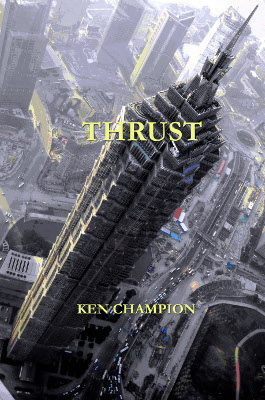
.jpg)
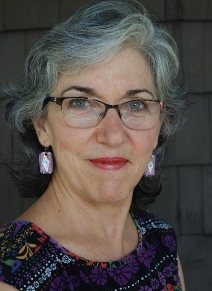
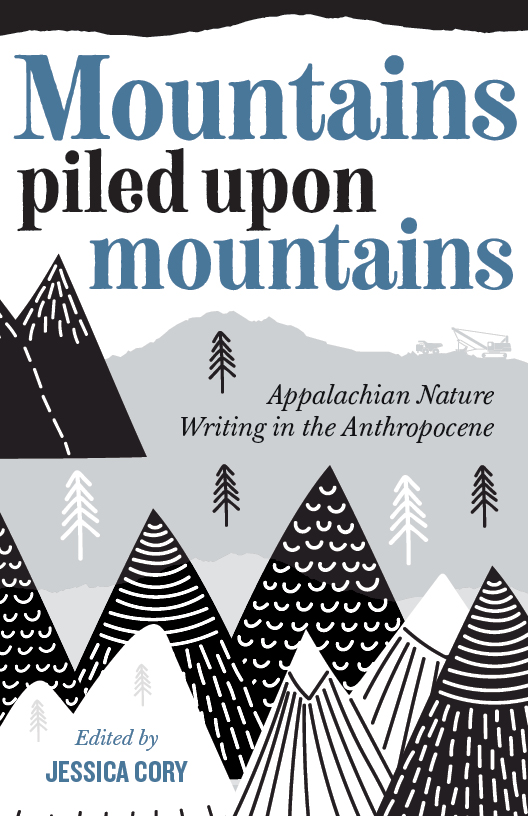
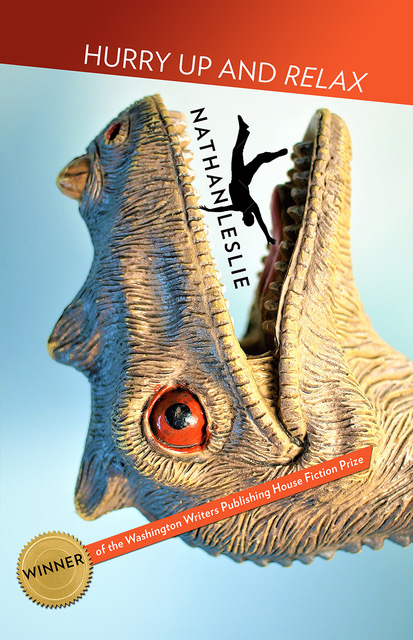
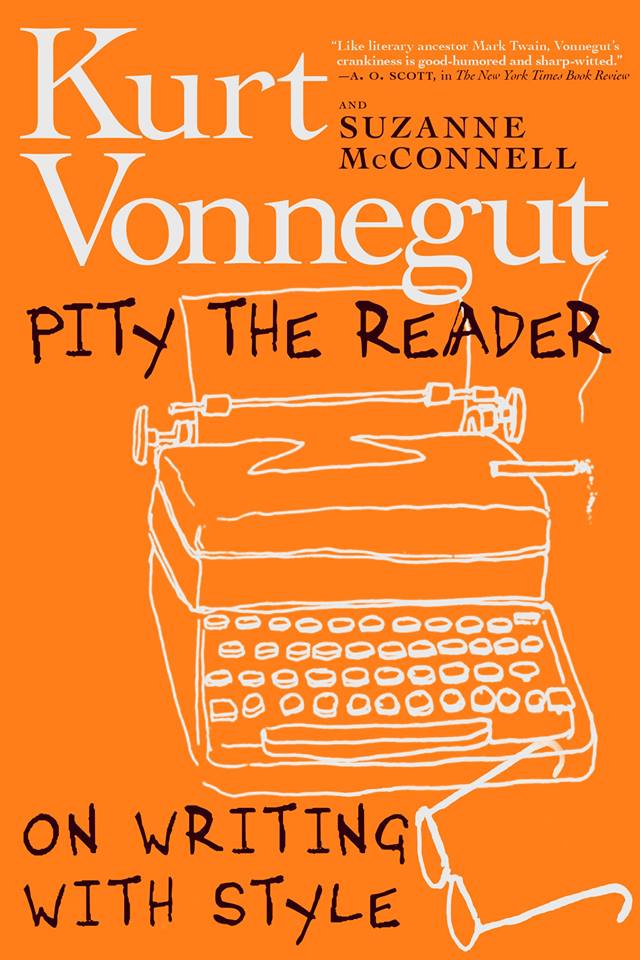
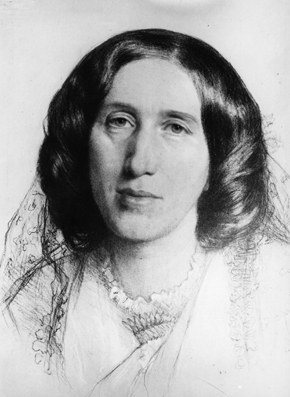
.jpg)

